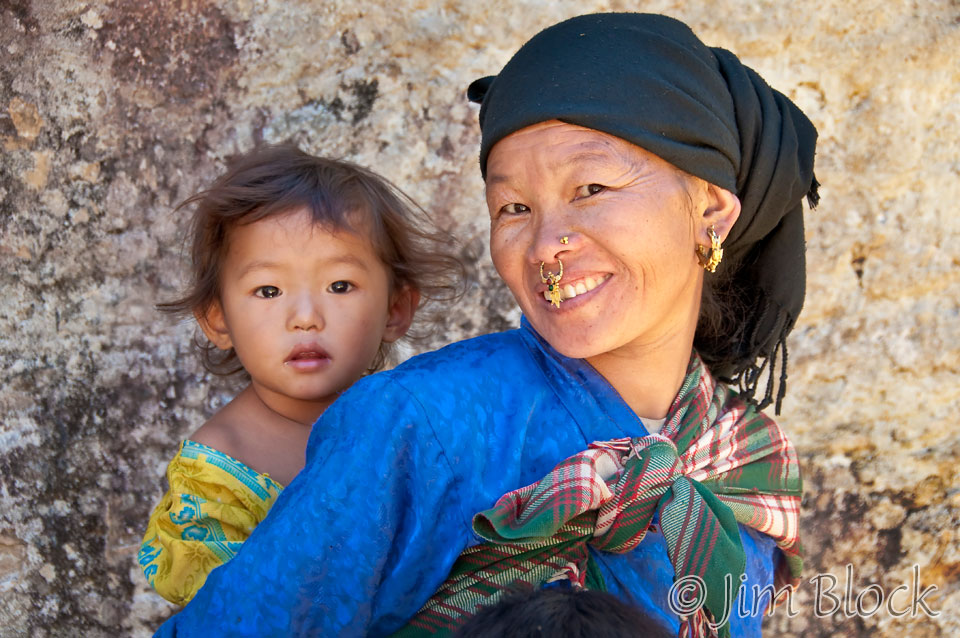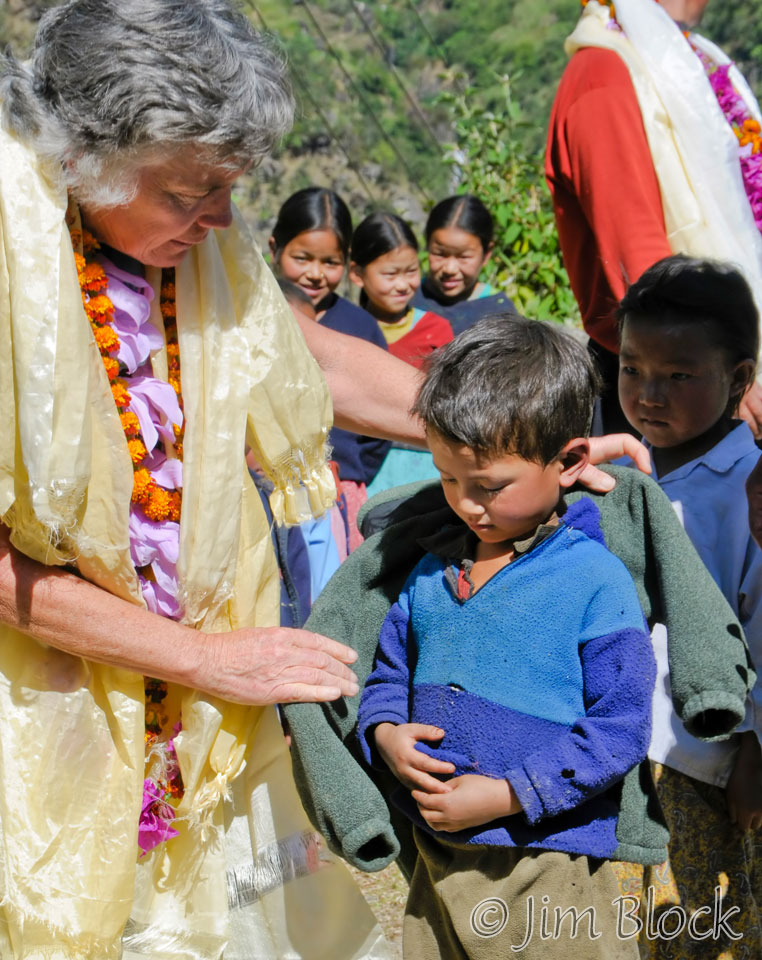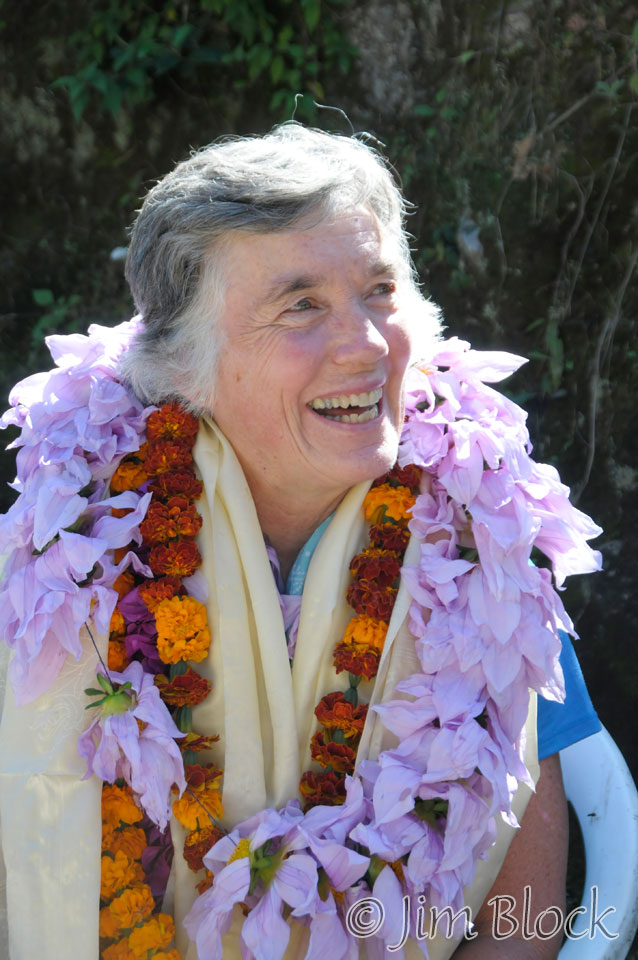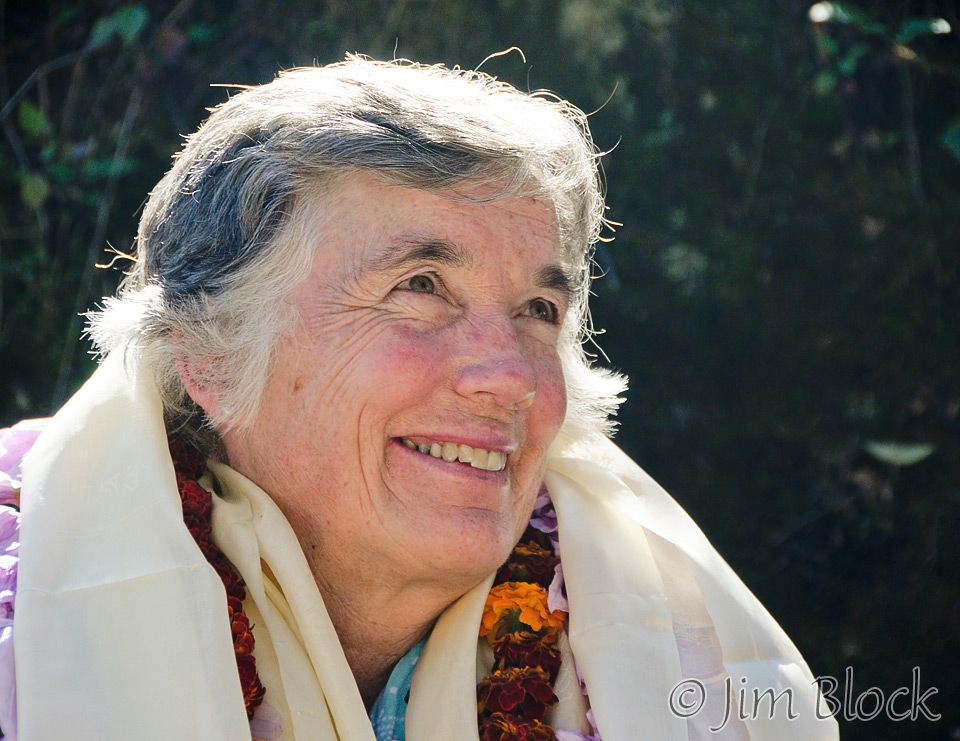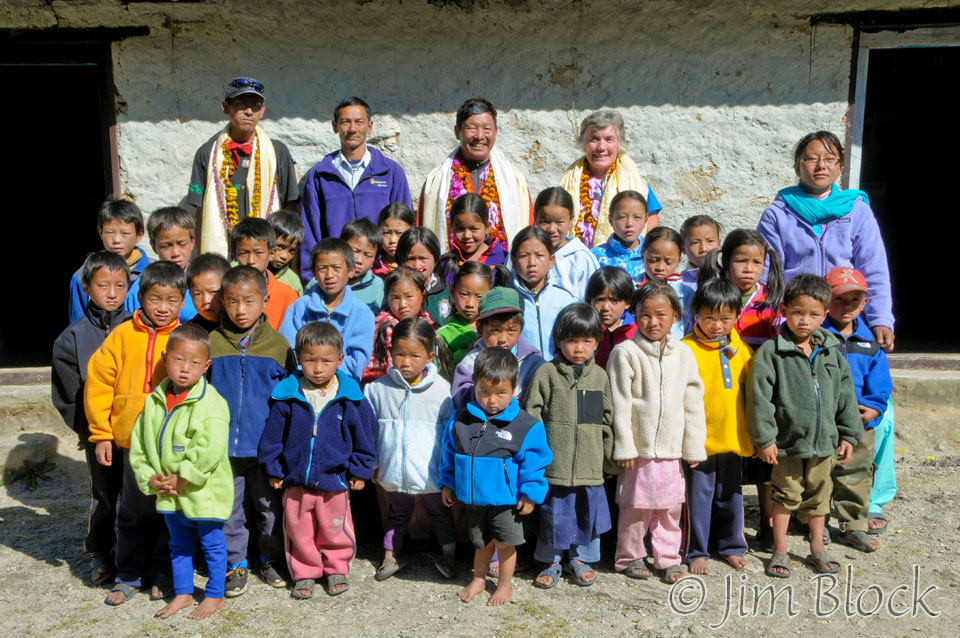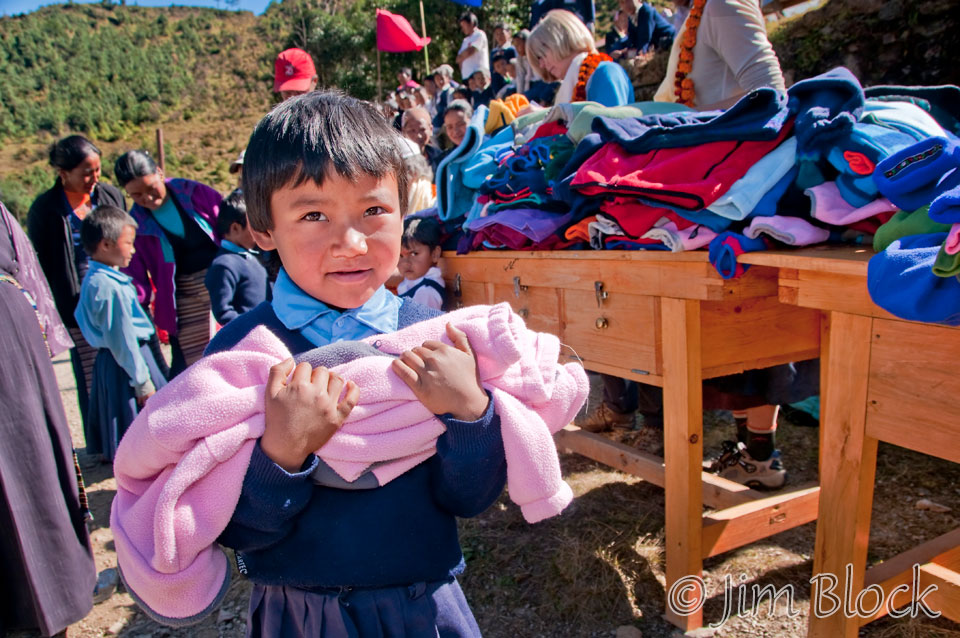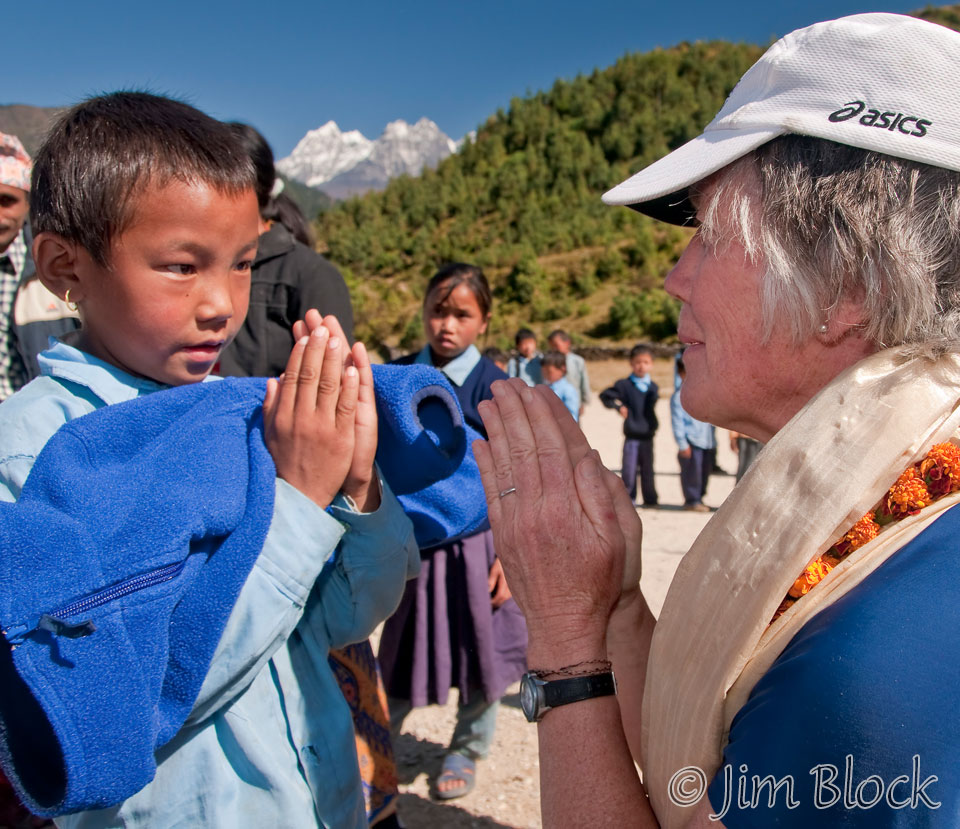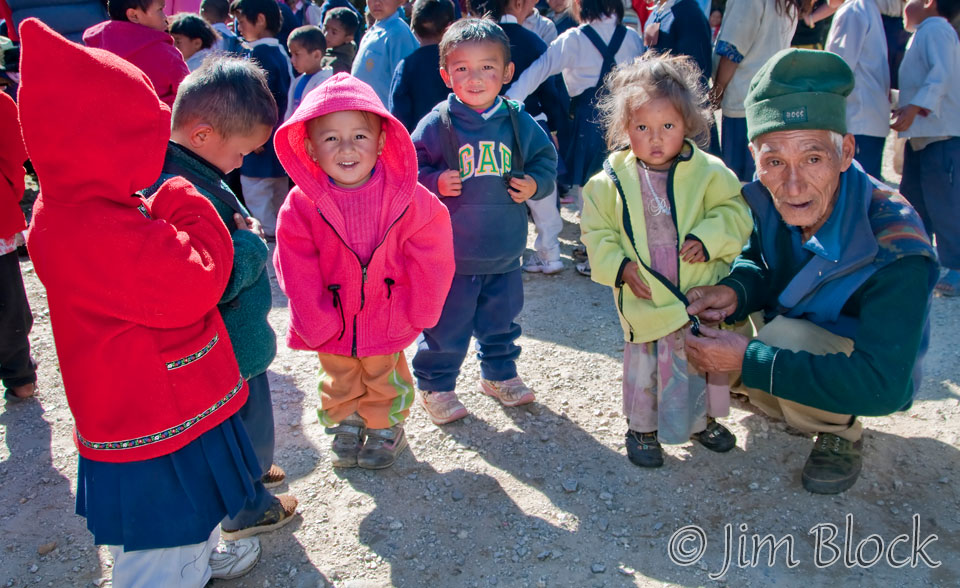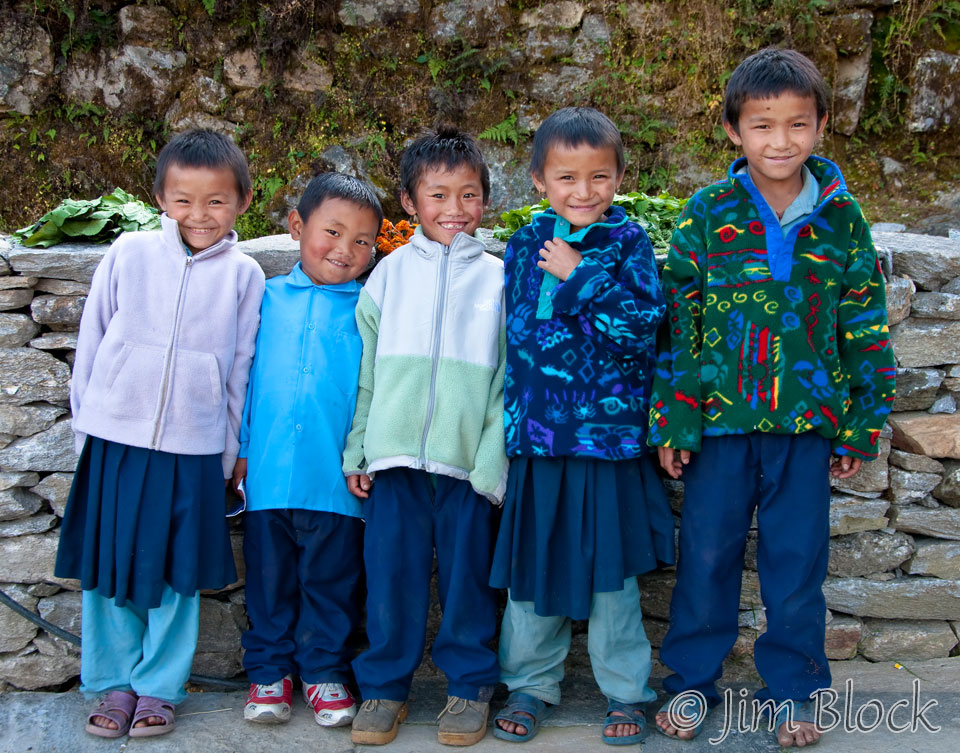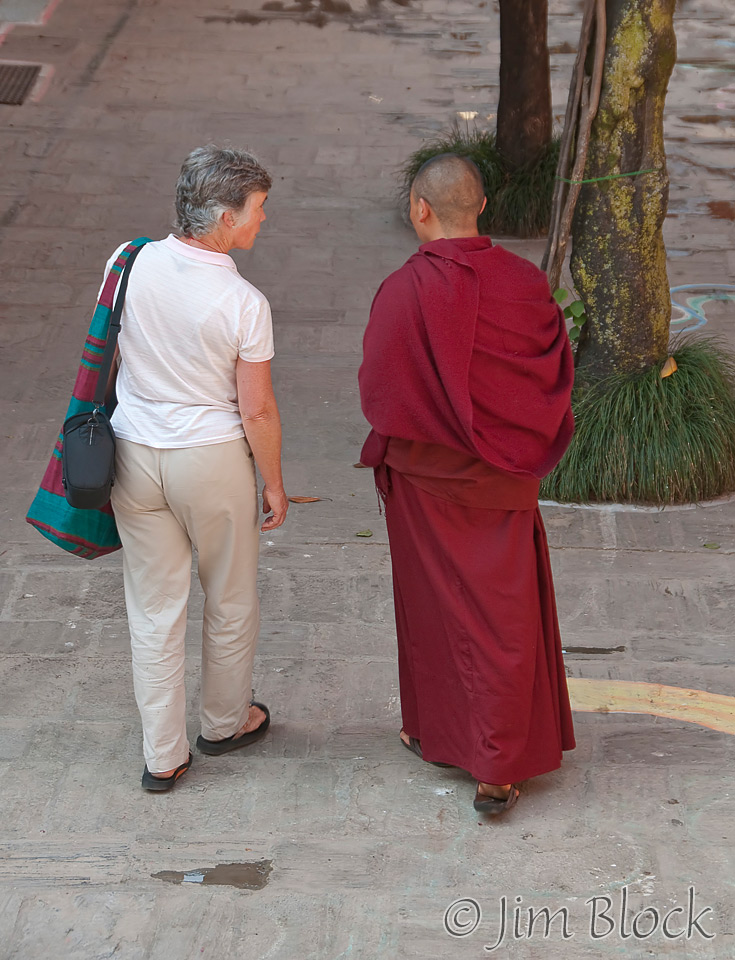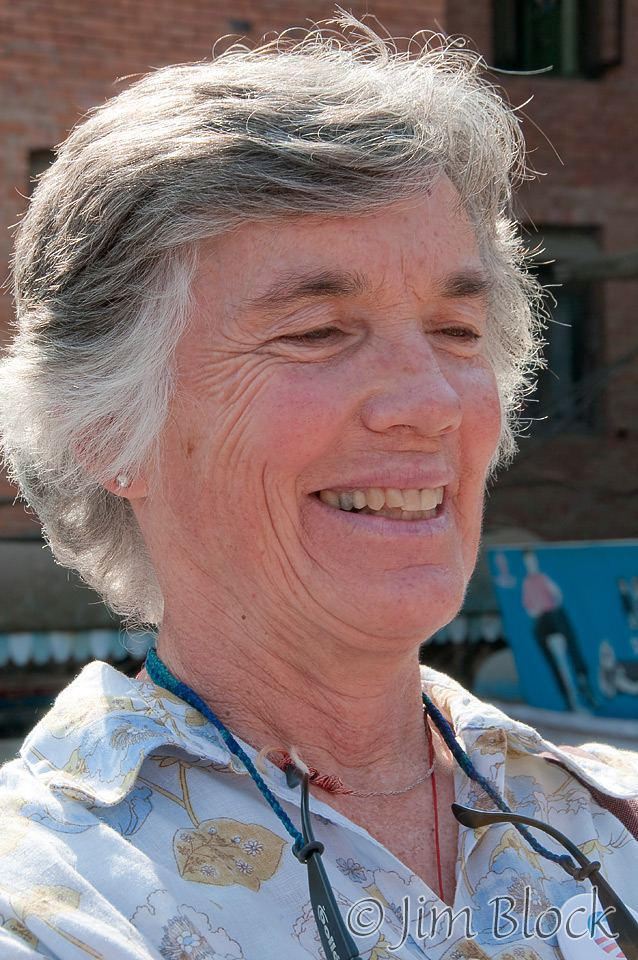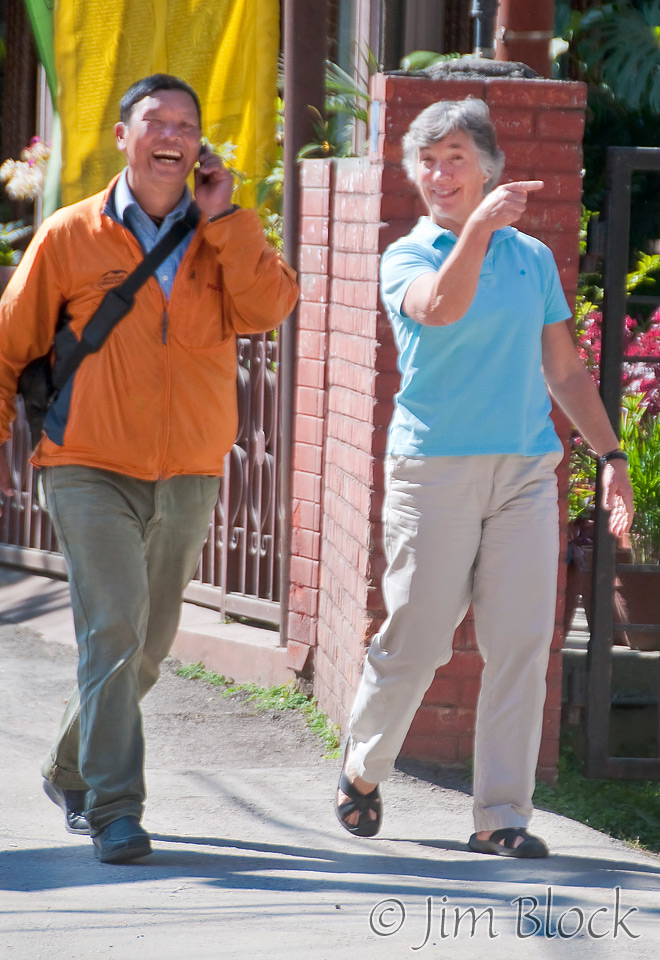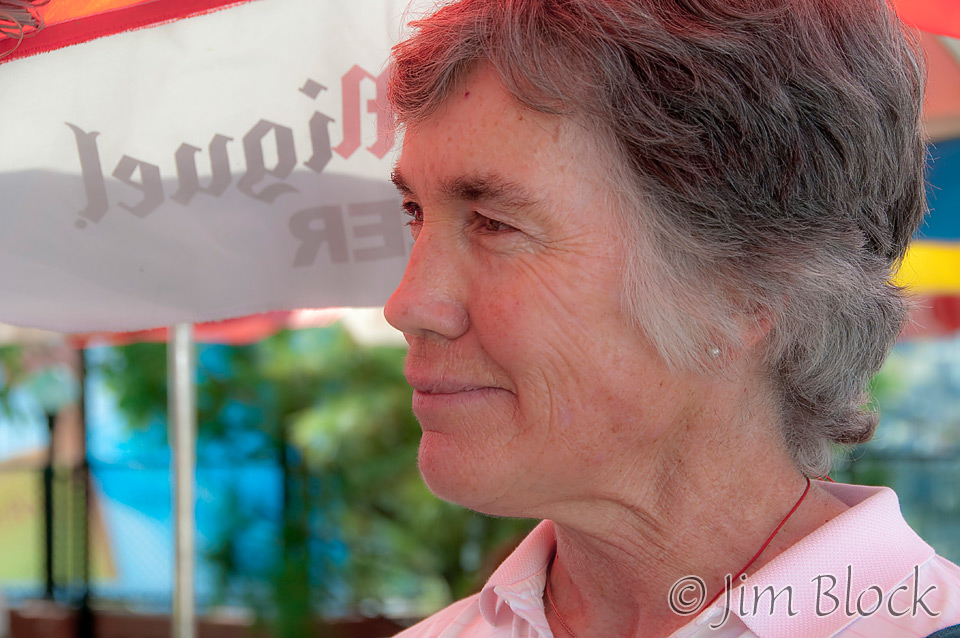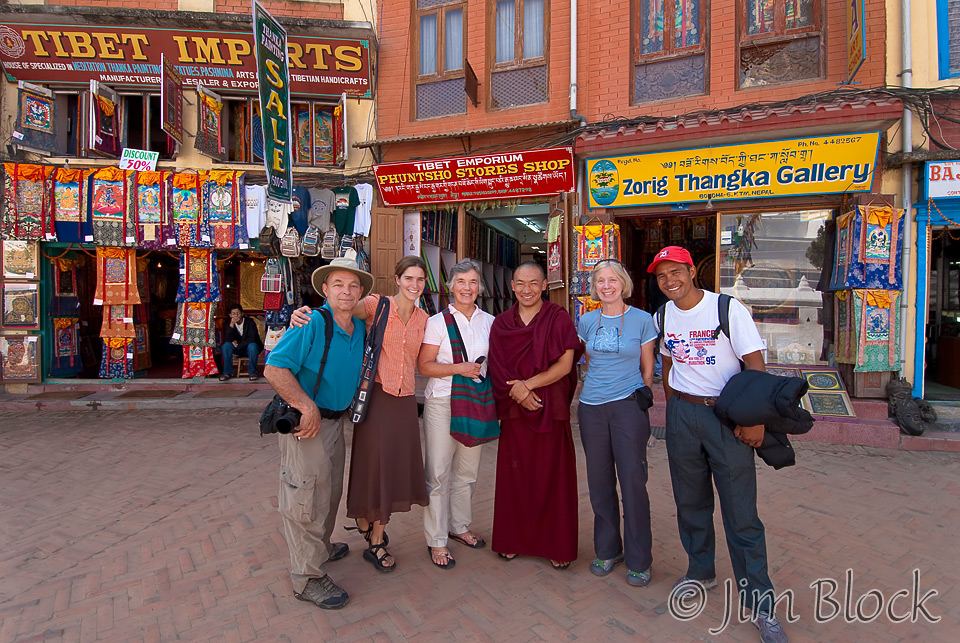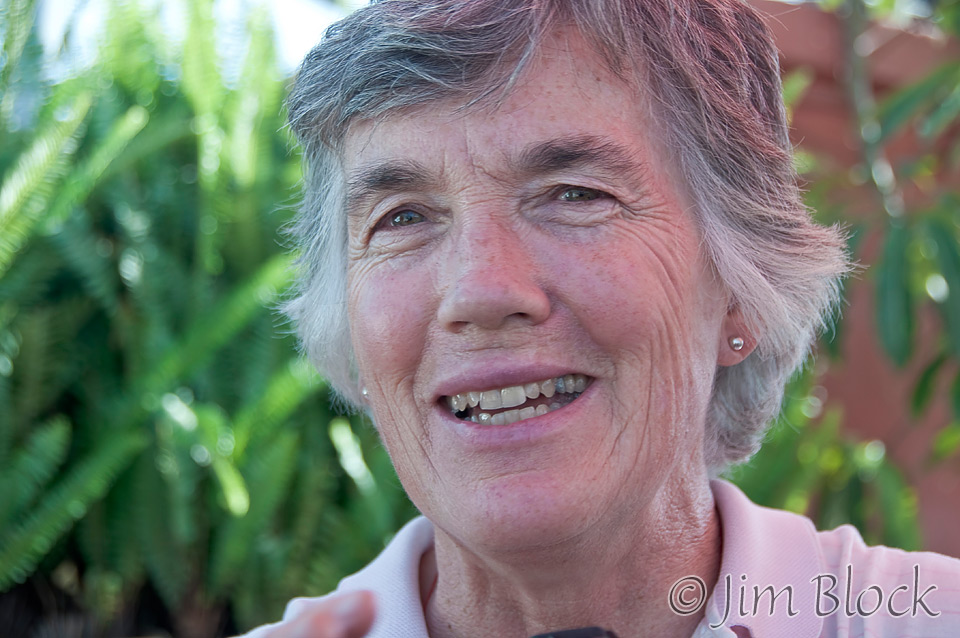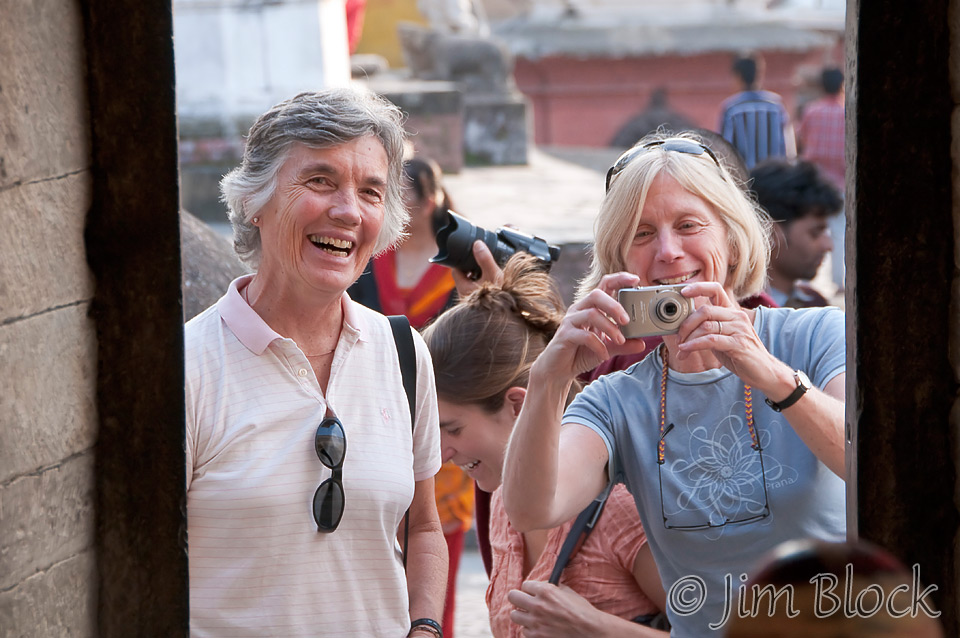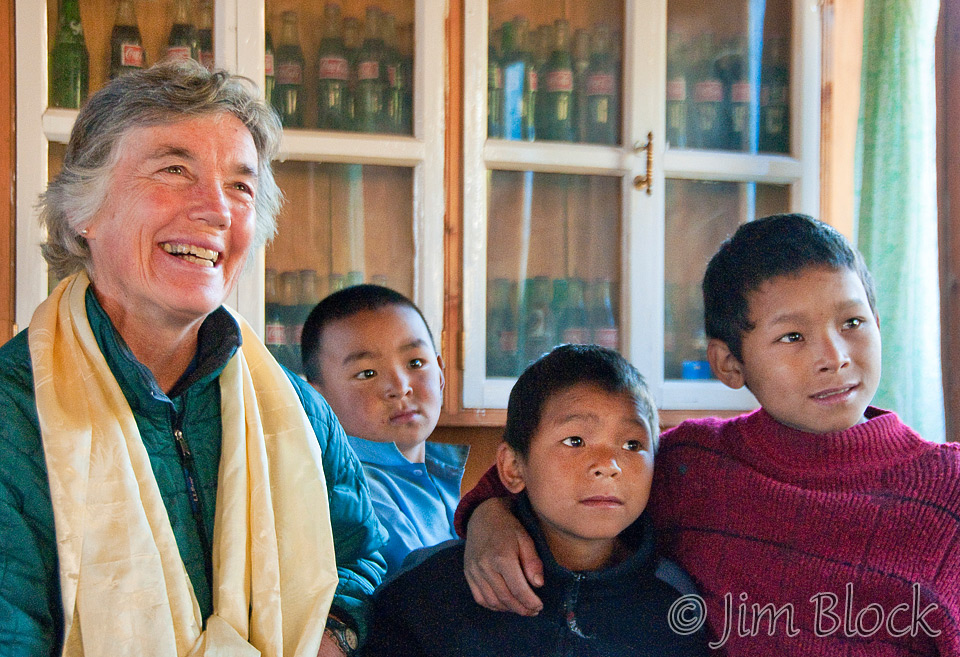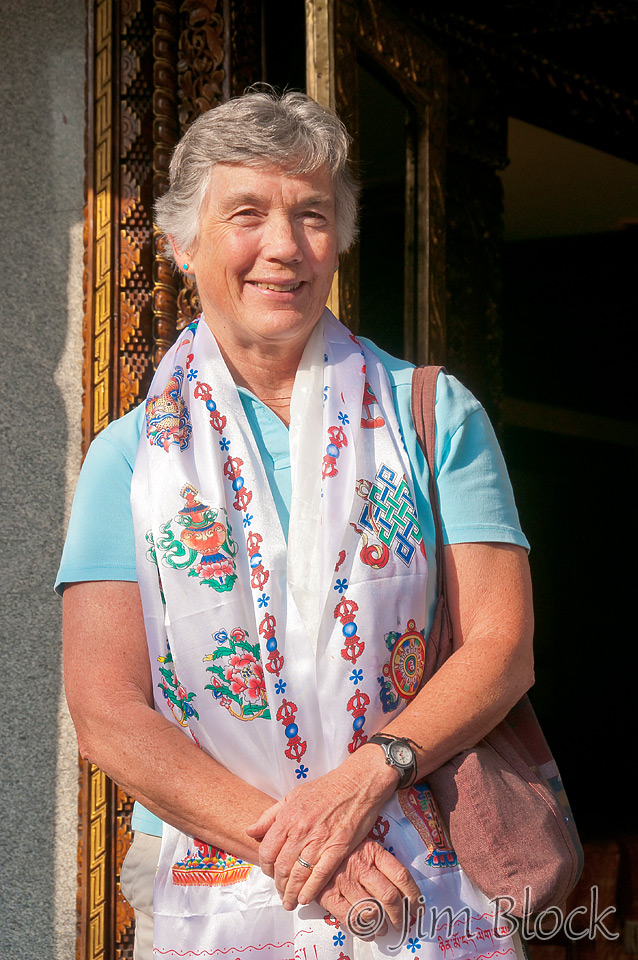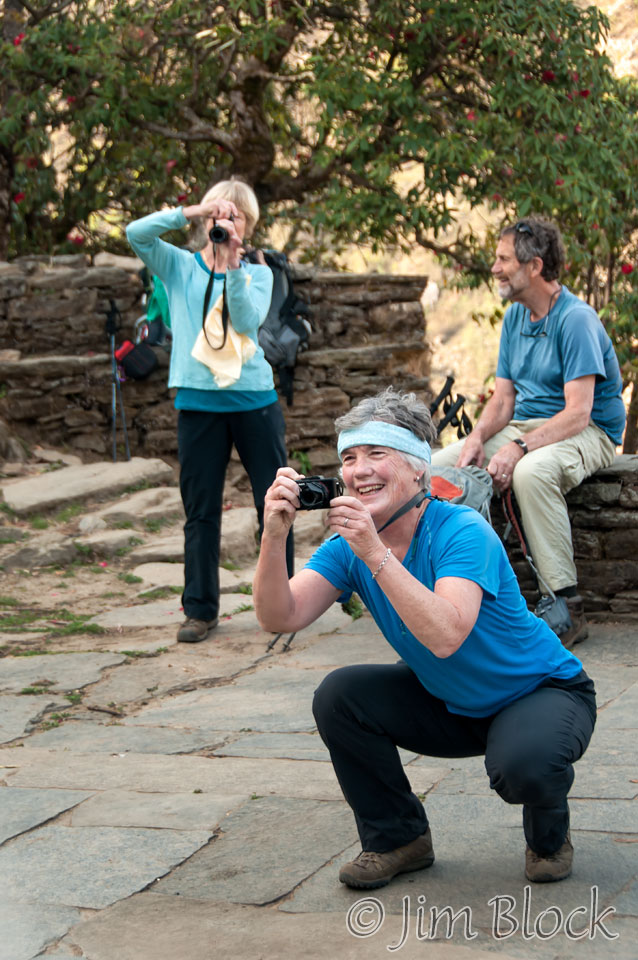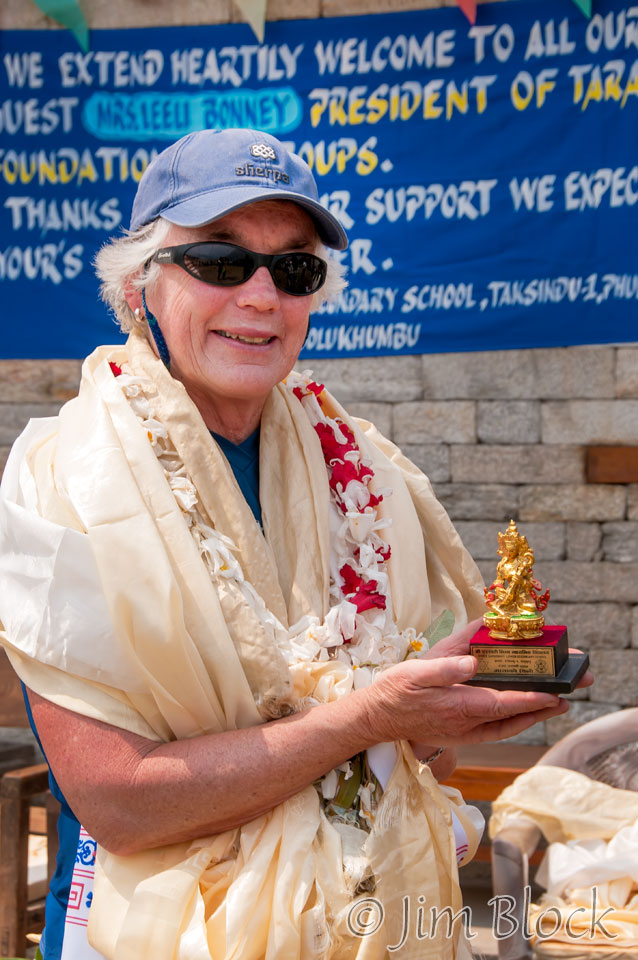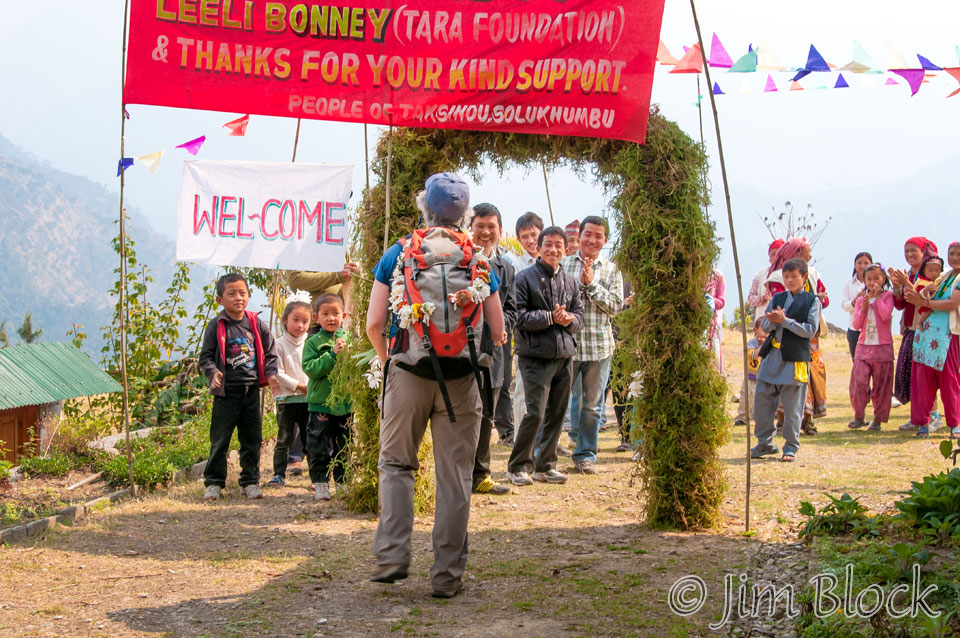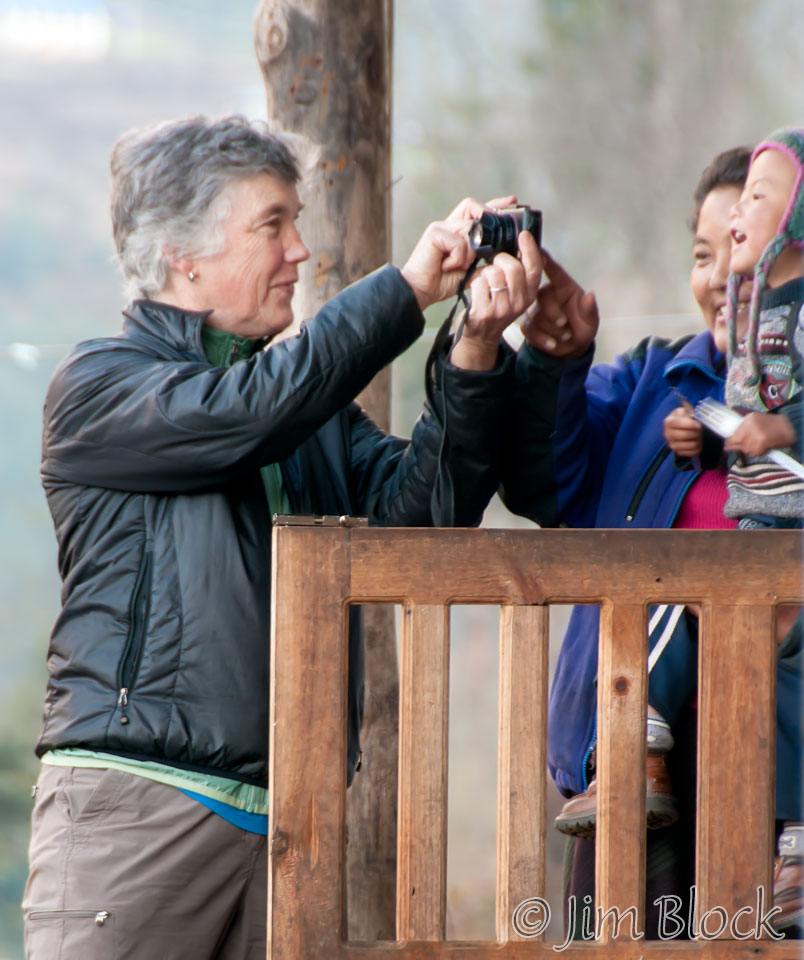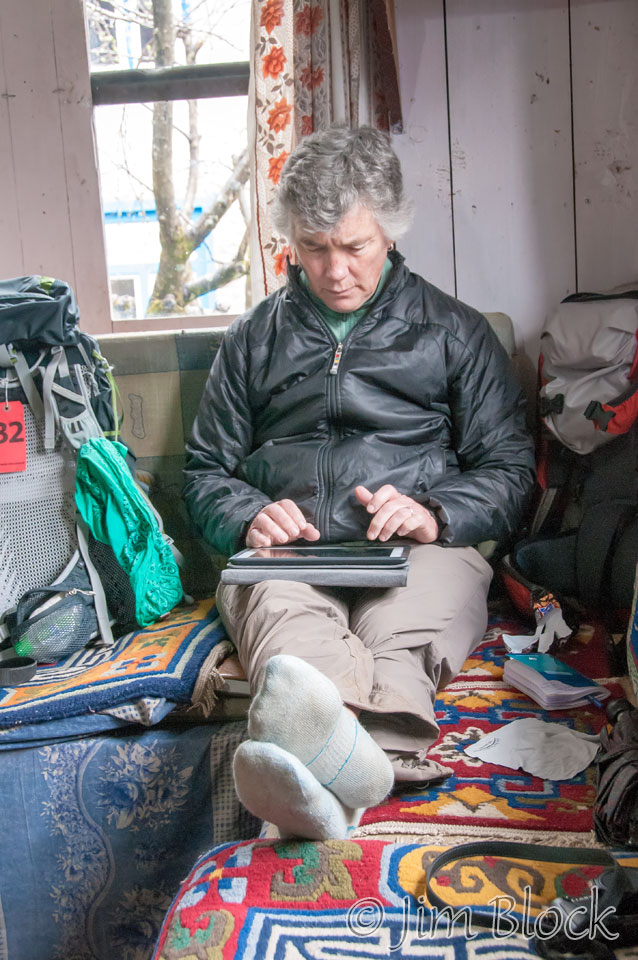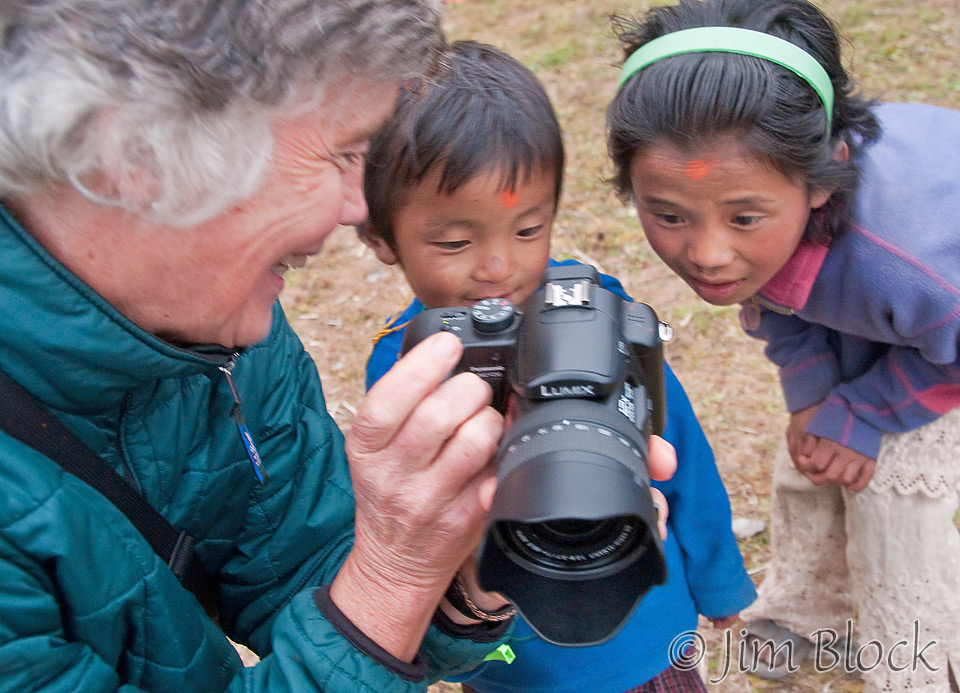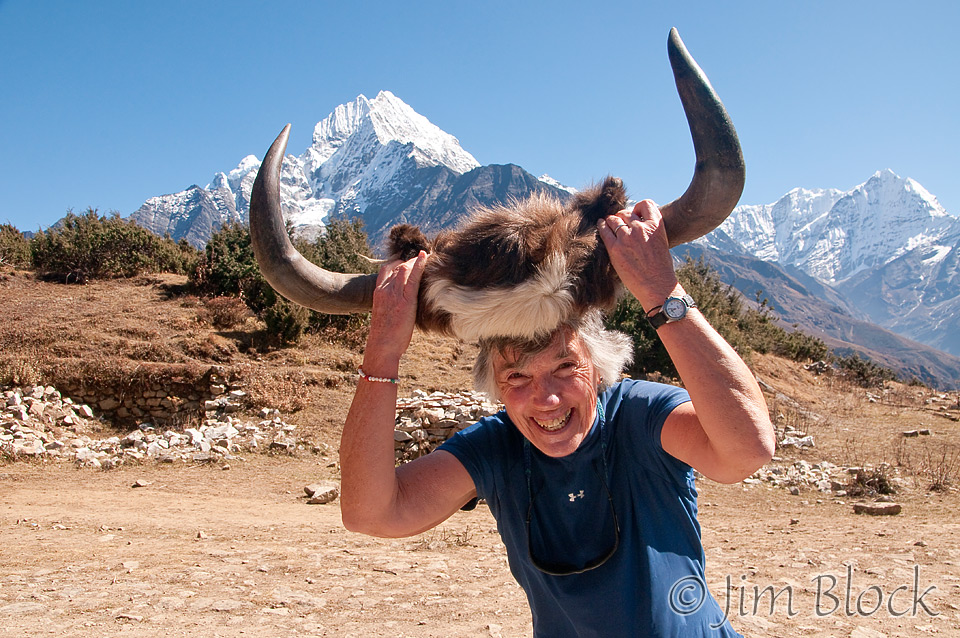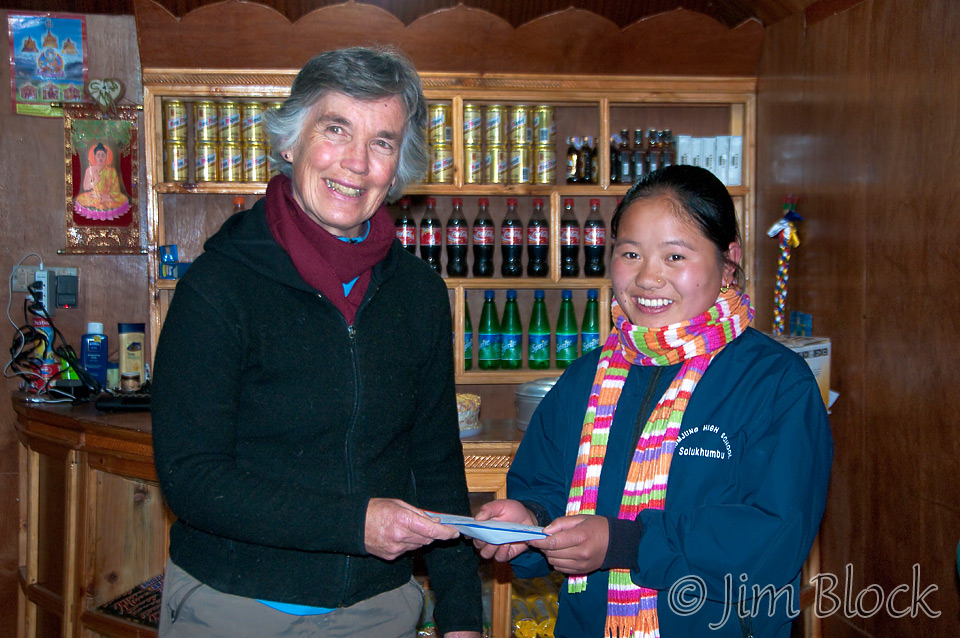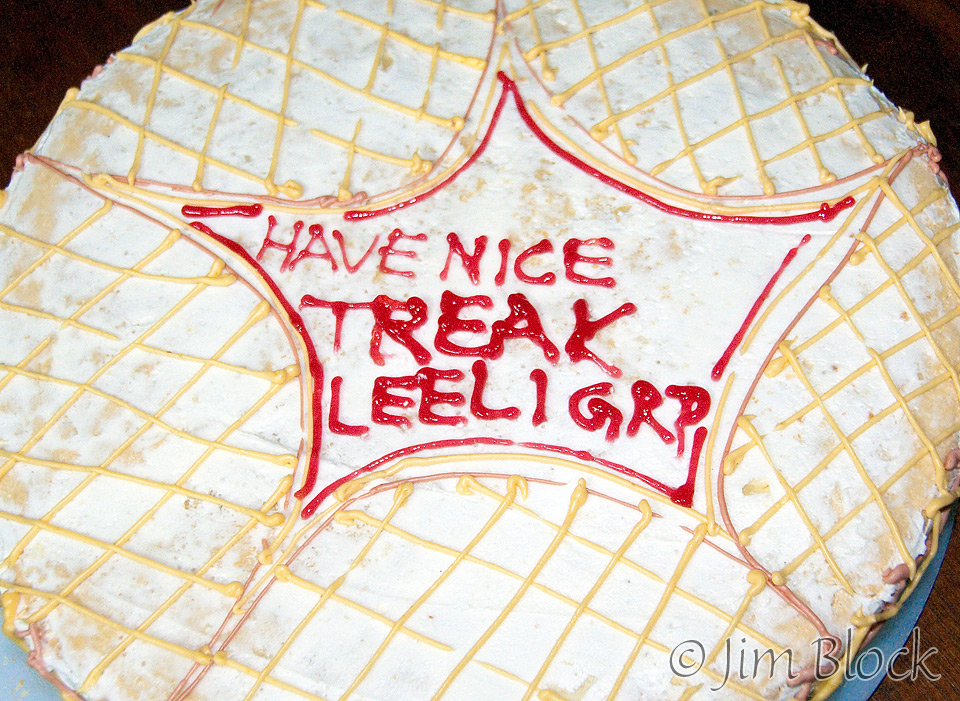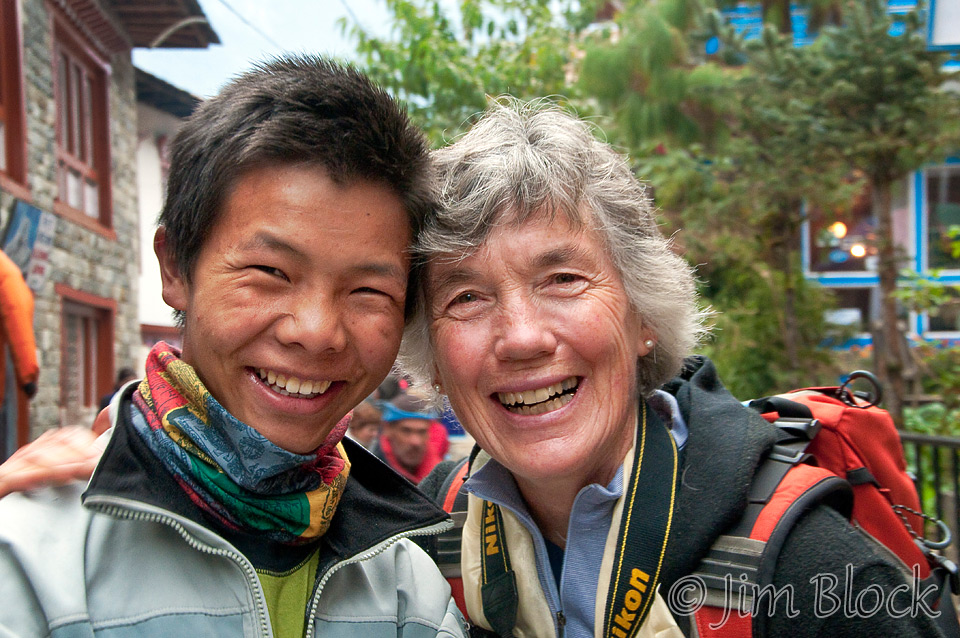Leeli Bonney
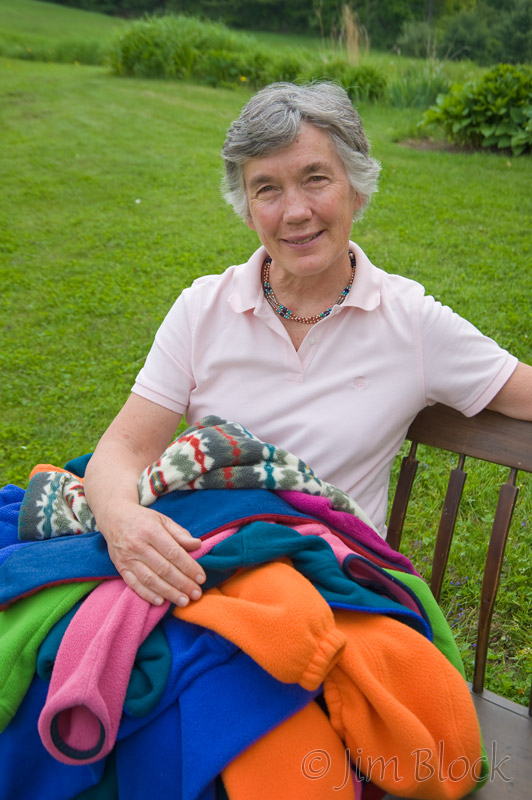
I first met Leeli in June 2008 when I visited her home to photograph her for an article in Upper Valley Life magazine. The article focused on voluntourism — basically doing good works while traveling. “At the core of voluntourism is the desire to help others.”
The article focused on her continuing efforts to help the people of Nepal. She started by bringing used fleece jackets to children in Nepal. The jackets were donated by children from many local New Hampshire and Vermont schools. The photo on the right shows Leeli in her yard with some of the jackets.
Leeli founded the Tara Foundation USA in 2007. It’s initial project brought 23 fleece jackets to children. And then she expanded with many other projects. The projects have involved building bridges, helping schools and school children, supplying electrical poles, developing micro hydro, starting drinking water projects, and supporting the Khari Gompa nunnery in Thamo near Mount Everest.
“The mission of the Tara Foundation USA is to improve the lives of people living in the Himalaya and help them to preserve their traditional culture.”
When I photographed Leeli at her home, I confused countries and said, “I always wanted to go to Bhutan.” She replied, “I go to Nepal.” I got on her short email list of interested friends and found myself heading to Nepal five months later.
There were four of us on that first trip. We each carried a duffel bag for our own clothes and a light blue L.L. Bean duffel bag stuffed with 50 pounds of fleece jackets.
The photo below shows Leeli in the Kathmandu airport parking lot following two carts with the duffel bags of jackets.
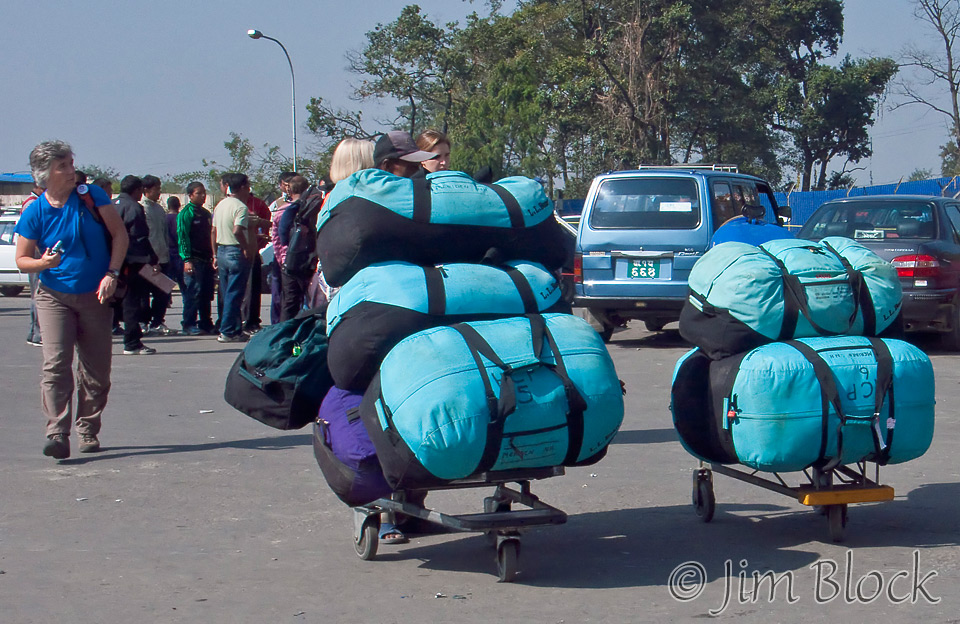
We finally made our flight to Lukla in the Solu Khumbu region of Nepal after a two day delay because of weather. Lukla is definitely not an airport to fly into when the weather is bad or visibility is poor. It is purportedly the most dangerous airport in the world. It is on the edge of a cliff with a very short runway and a mountain at the end of the runway so no second chances on a landing.
Below is our group — Sara, Denise, Leeli, and me — having breakfast in Lukla the first morning of our trek.
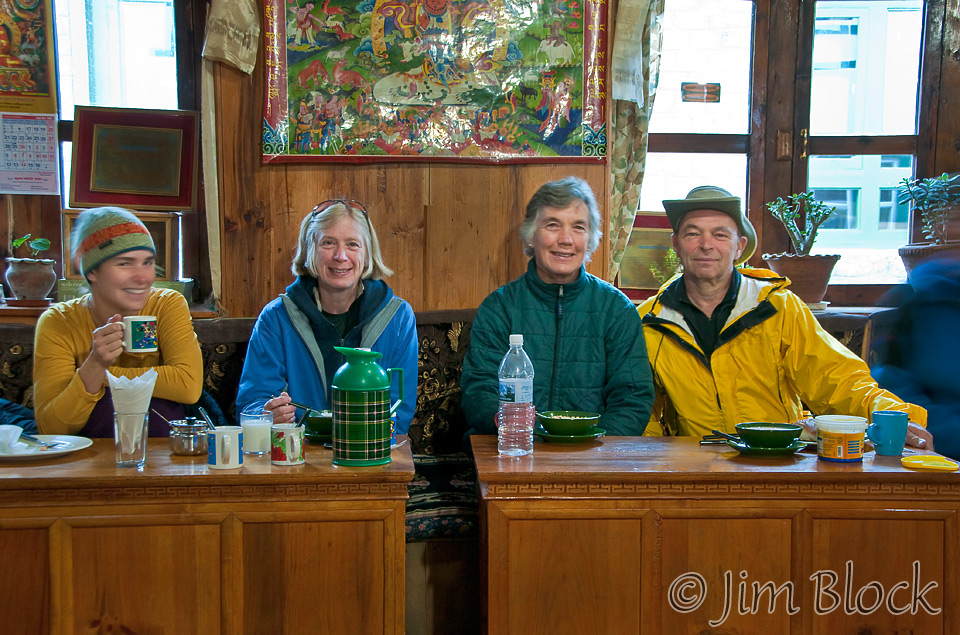
A few hours into our trek we stopped to pose for a photo with Chhongba.
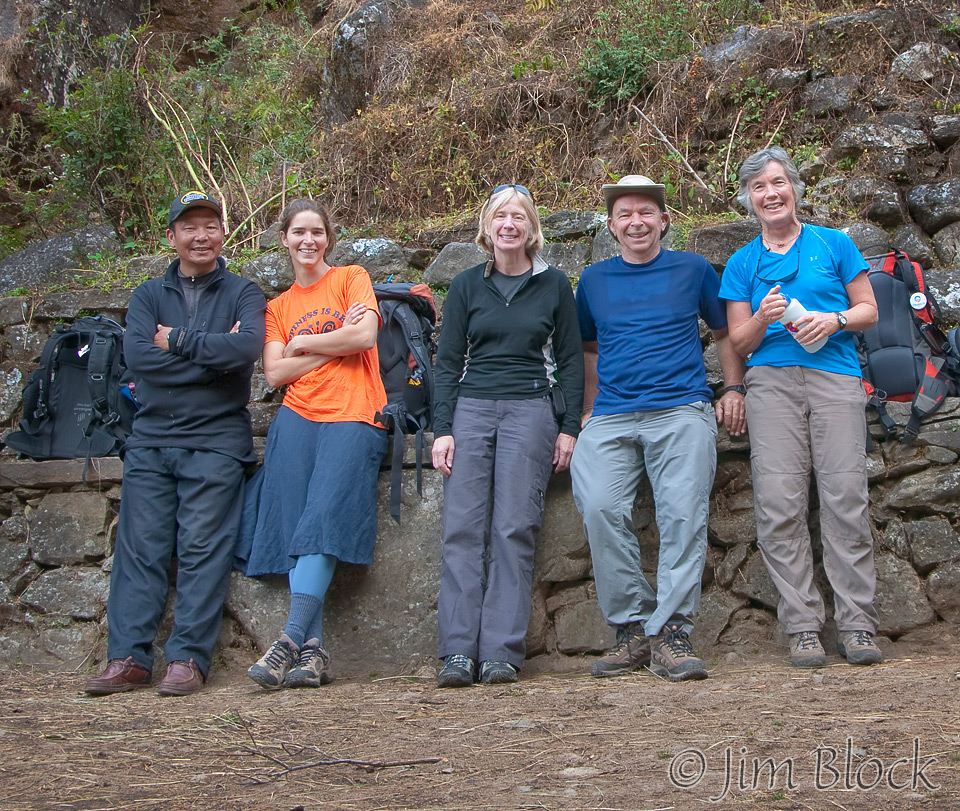
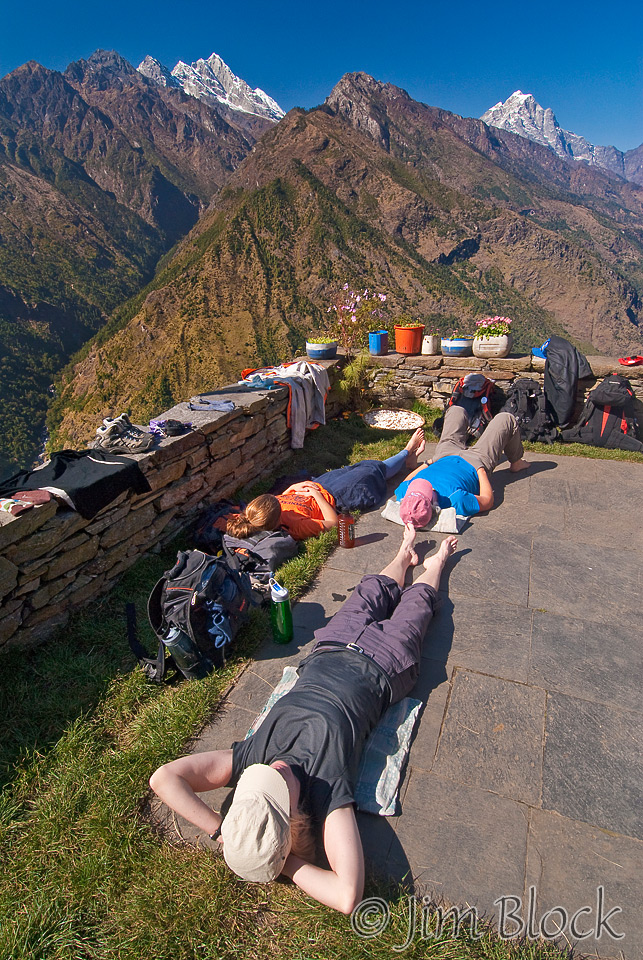
We stopped at the appropriately named Mountain View Lodge for lunch and afterwards stretched out in the sun.
It had been a challenging few days to get to this point. We sat in the Kathmandu airport for most of a day waiting for weather in Lukla to clear. The next day we didn’t even bother going to the airport. We finally made it to Lukla on our second trip to the very marginal domestic airport terminal in Kathmandu.
After the first failure, Chhongba scrambled to get the trek underway. He decided we could try to fly into Phaplu instead of Lukla. So he sent the sherpas and porters in that direction. Then when we finally were able to fly to Lukla, he had the sherpas and porters turn around and head back to Lukla.
Since we lost two days, our plans to travel to a number of individual schools to deliver the jackets were modified. We would go to one school near Jubhing, the Purdu school, since it was along our planned trek. Then children from other schools in the Taksindu region would travel to the Nunthala school and receive their jackets there.
Along the way Leeli photographed children and adults and shared her photos on the monitor of her camera.
As a side comment, I found the people in the Solu region very friendly and happy to have their photos taken. This contrasted with the people along the main route from Lukla to Everest Base Camp who see more than their share of tourists each day. In the Khumbu region north of Lukla, many were happy to be photographed, but some were not.
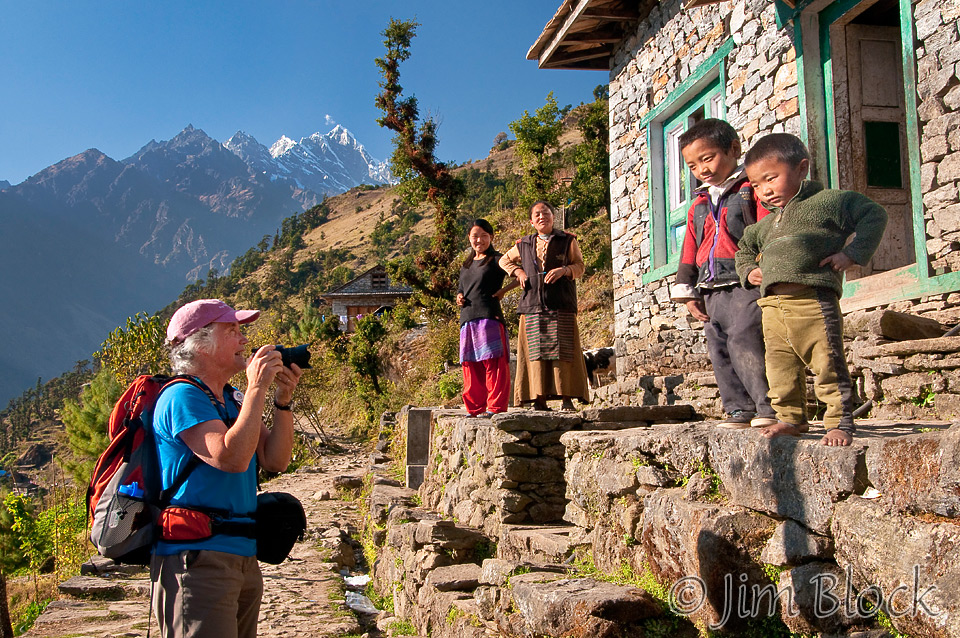
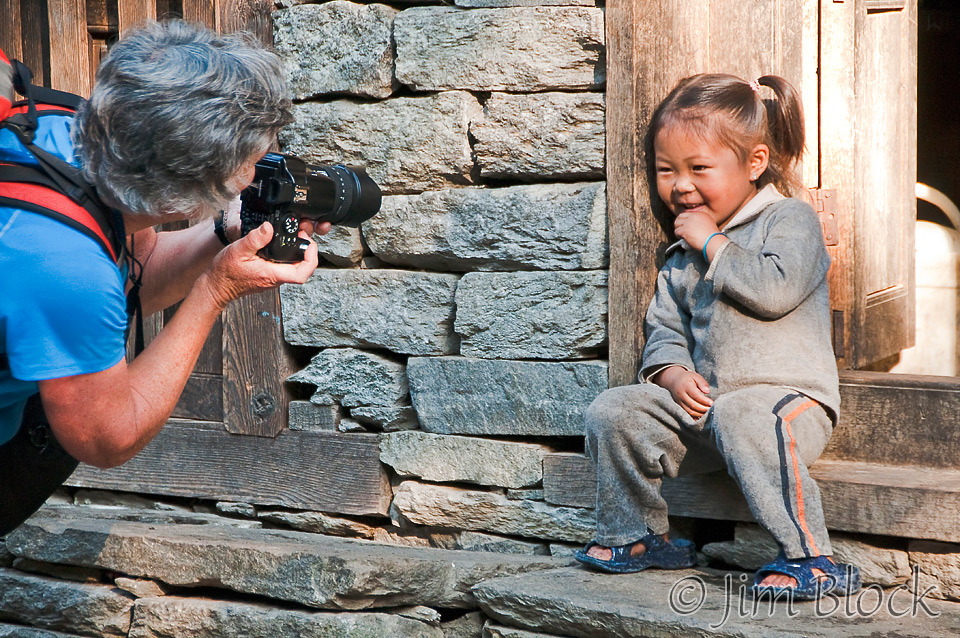
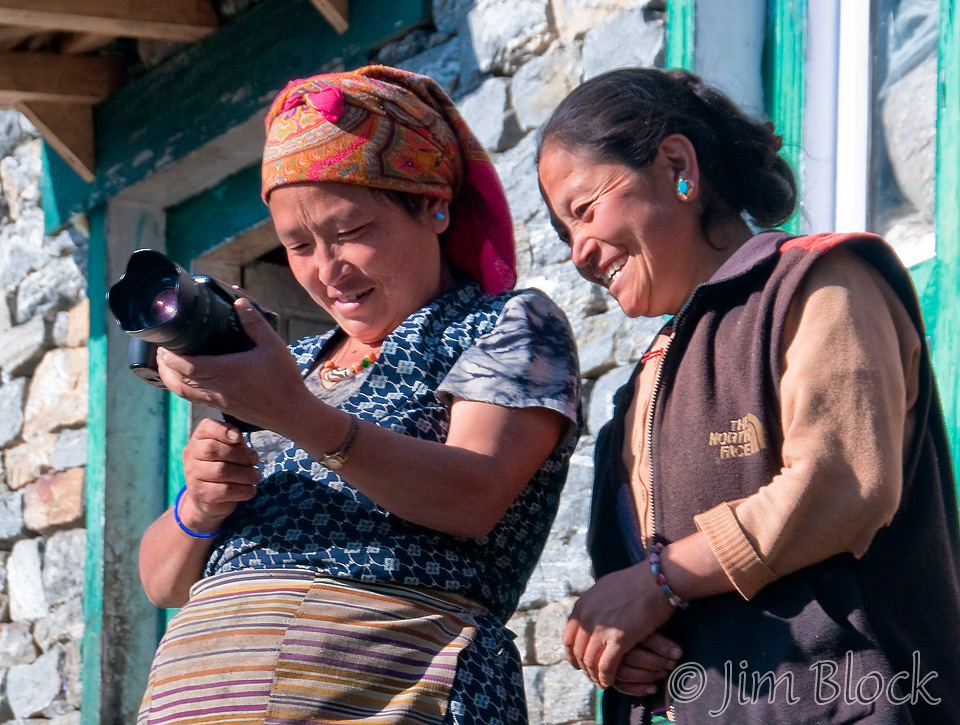
We had oranges for lunch. Leeli collected the peels to feed to the cows along the way.
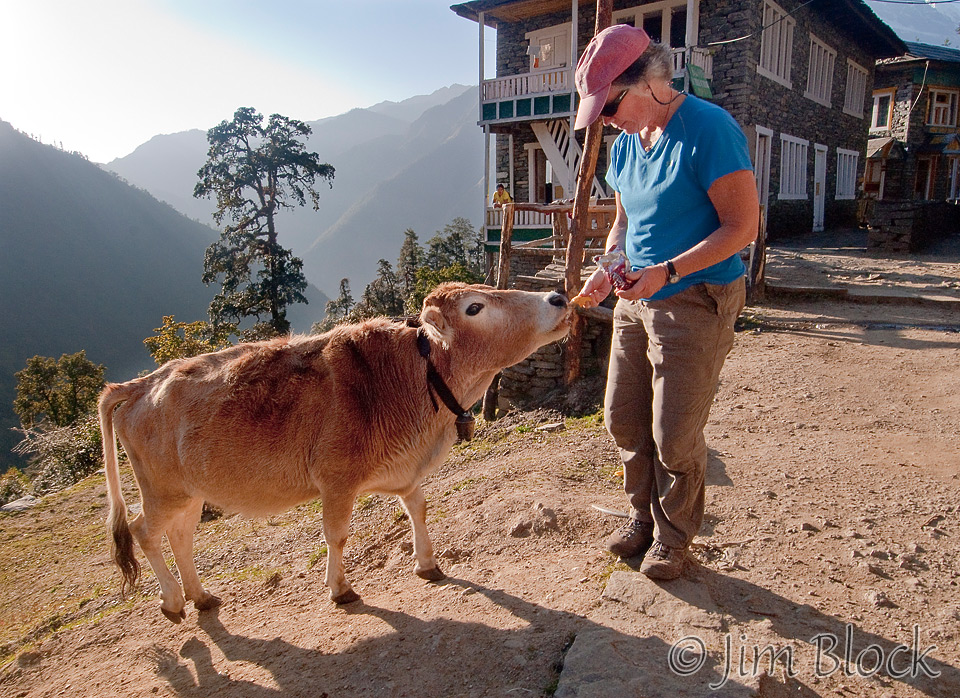
Porters carried pairs of 50 pound bags stuffed full with fleece jackets.
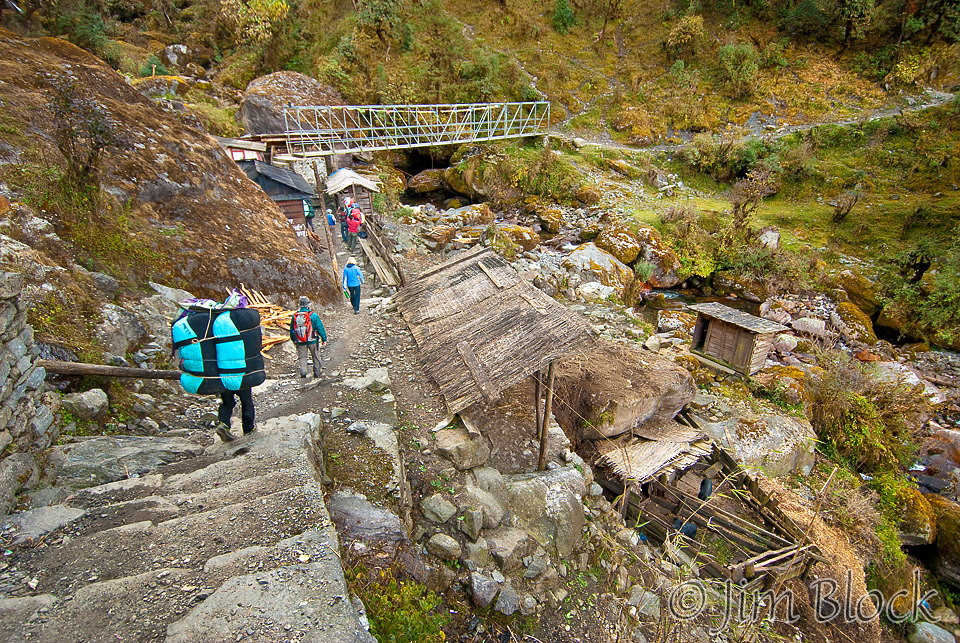
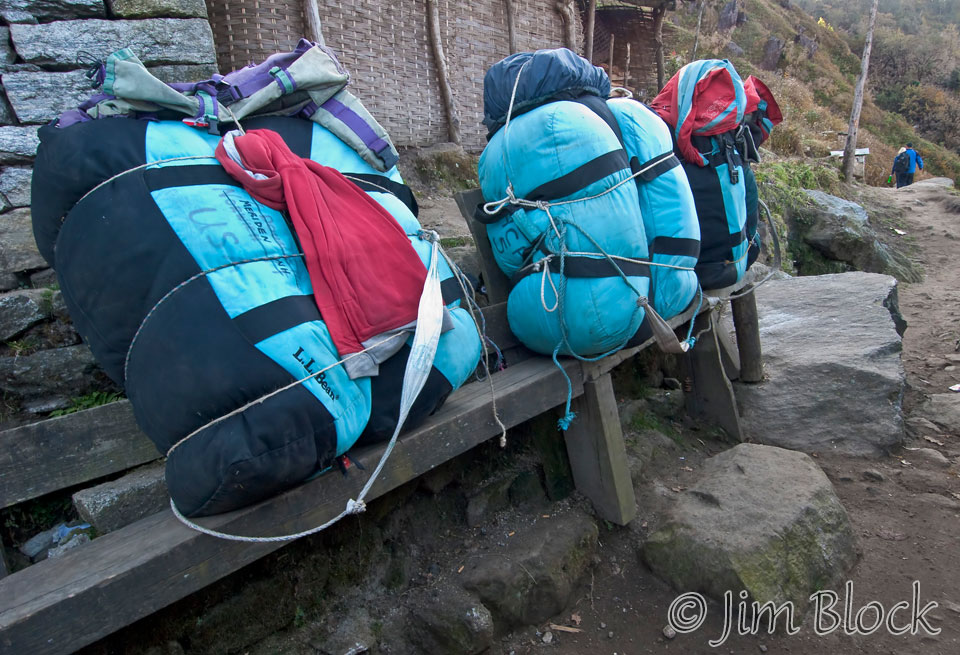
We arrived at the Purdu school to find children and parents waiting in the schoolyard. They showered us with katas and flower wreaths of marigolds and dahlias. We fitted the children with fleece jackets.
The next day we were at the Nantahala school distributing jackets. Again we were honored with katas and flower wreaths as well as traditional dances.
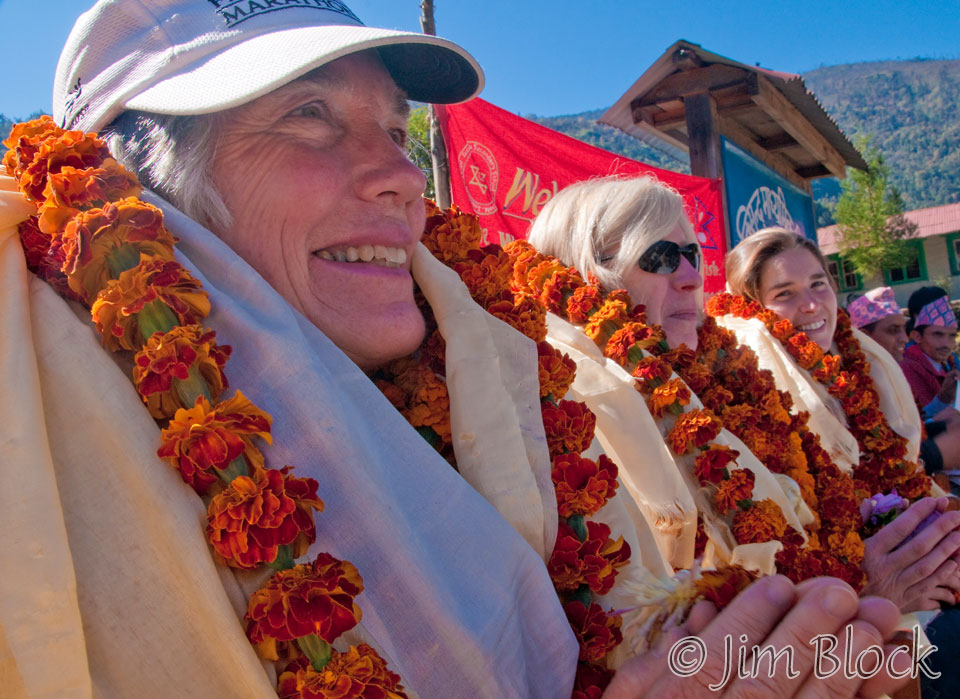
It was a beautiful day with temperatures well into the 70s. That did not discourage the children from wearing their jackets the rest of the day.
On my second trip to Nepal we visited the Khari Gompa Nunnery in Thamo near Mount Everest. We met Khari Rinpoche’s mother there. She lived just below the monastery. Khari Gompa is the first Tibetan nunnery that people come to when they cross over the Nangpa La (pass) from China.
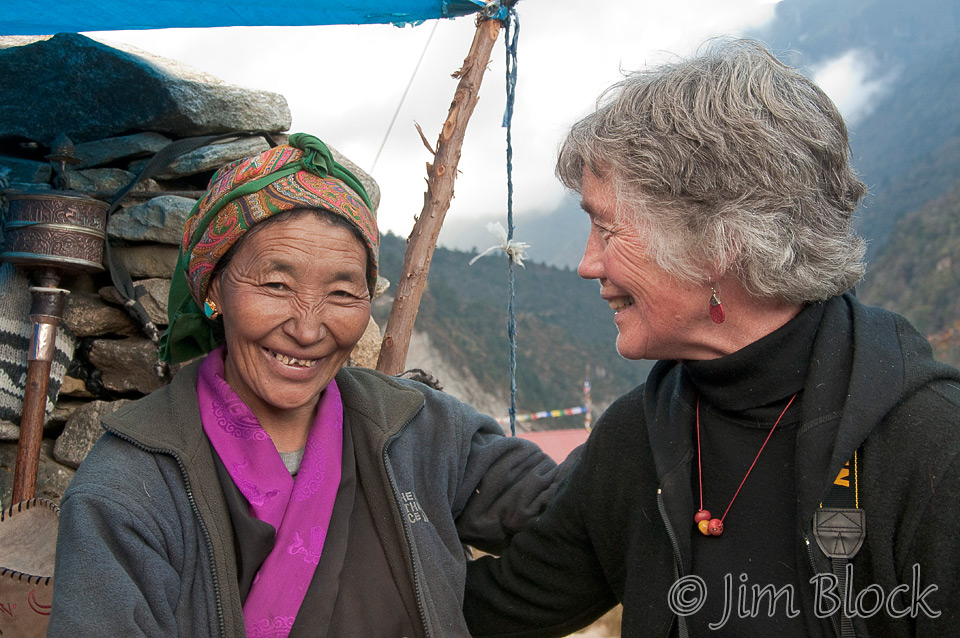
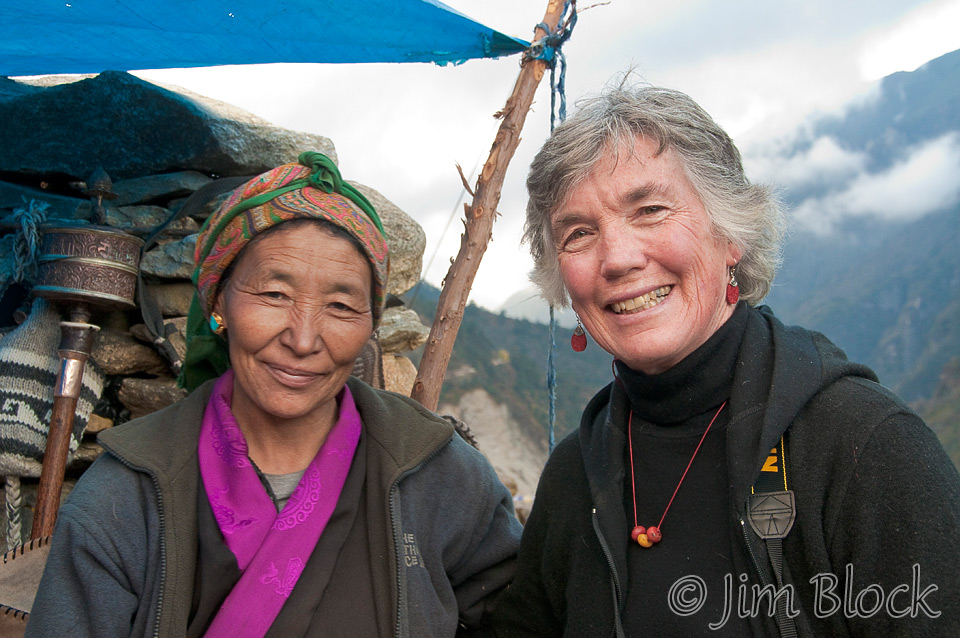
On my third trip to Nepal when we trekked the Annapurna circuit, Leeli traveled with us to Nepal but did not trek or stay in the country very long. Her mother was ill, and she did not want to be away on a lengthy trek.
For my fourth trip to Nepal we hiked from Jiri to Kala Patthar and Everest Base Camp over two very high passes. About a week into this four-week trek, we were greeted by a welcome committee as we approached the village of Nunthala.
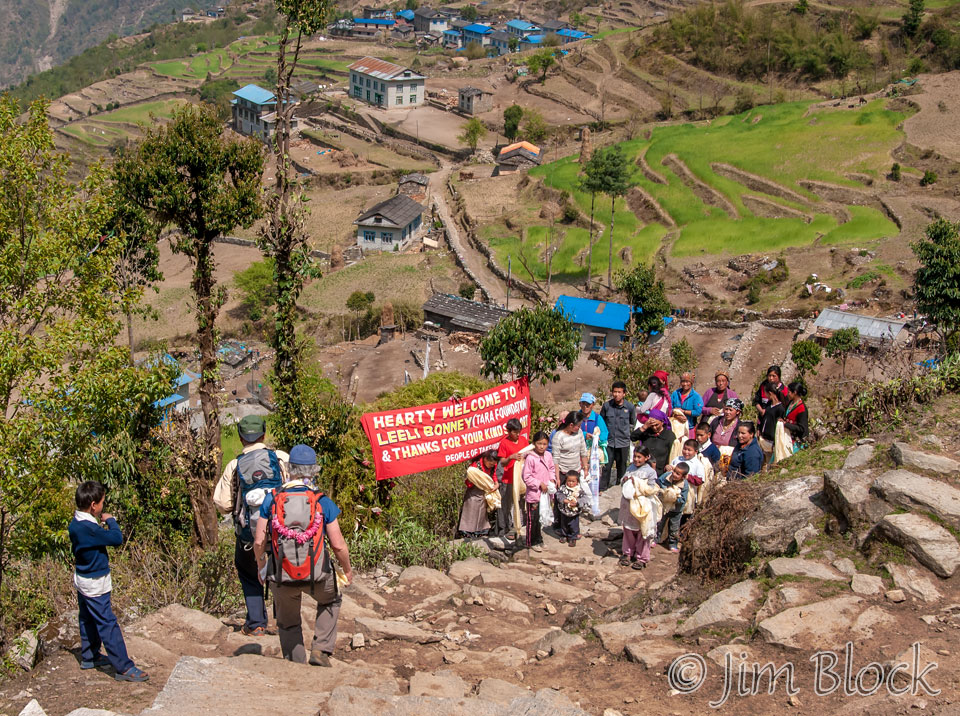
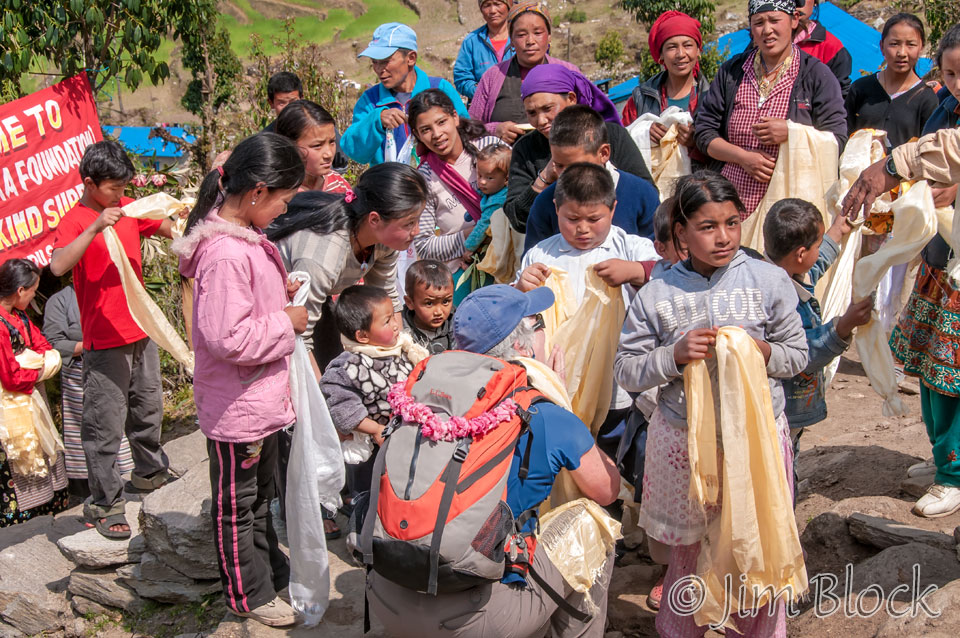
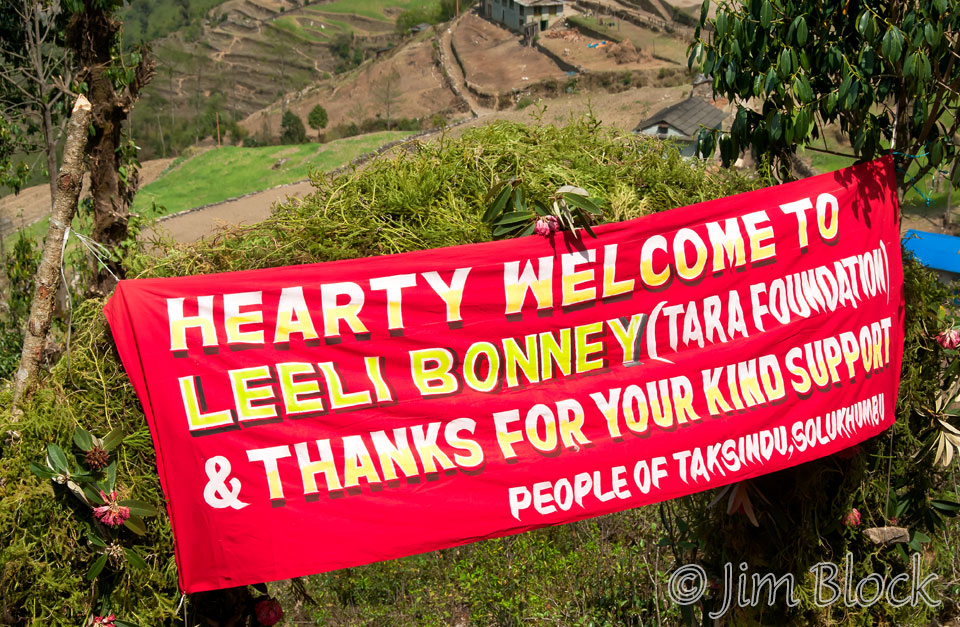
We visited the Nunthala school and were treated to multiple katas and traditional dances.
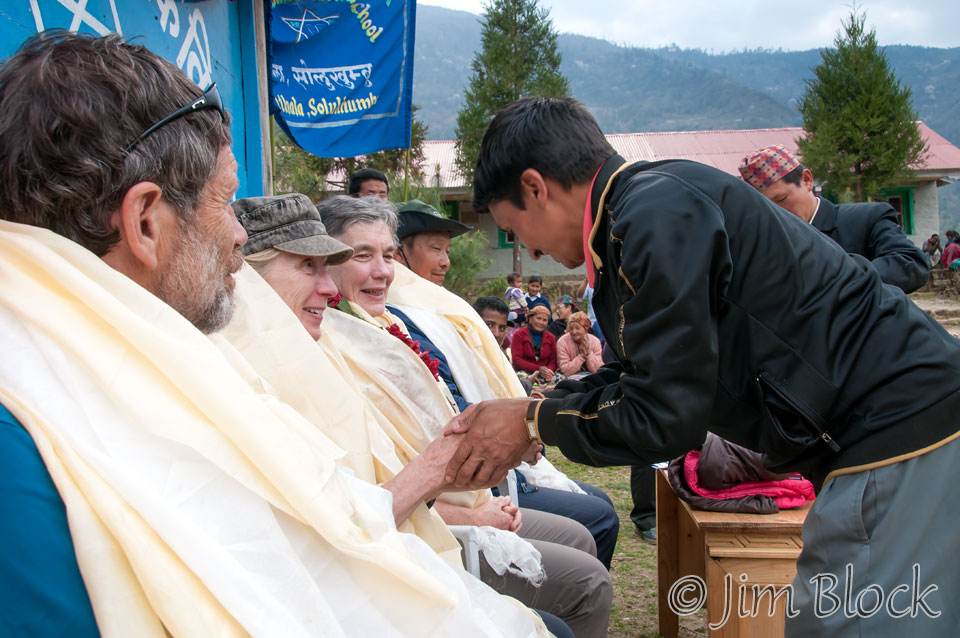
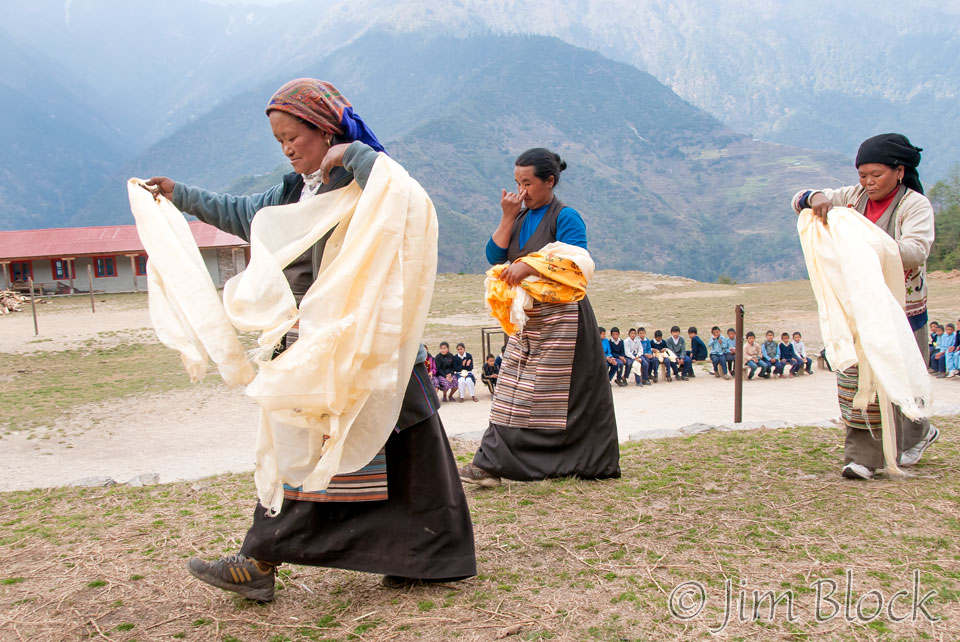
The next day we did not get very far before we ran into another group welcoming Leeli at the Sarawati Primary School in Pheluli.
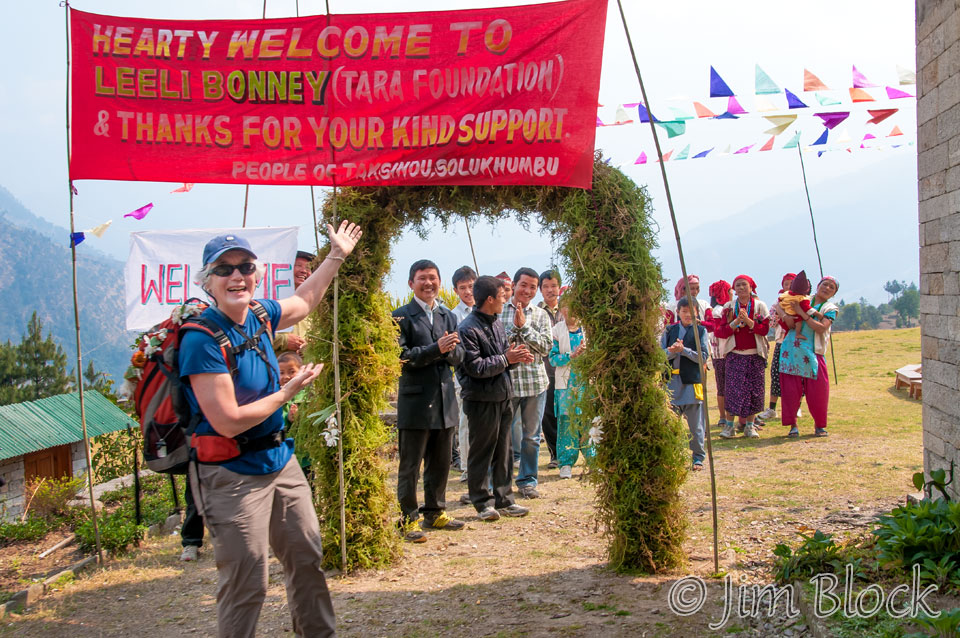
Again there were presentations and traditional dances in Leeli’s honor.
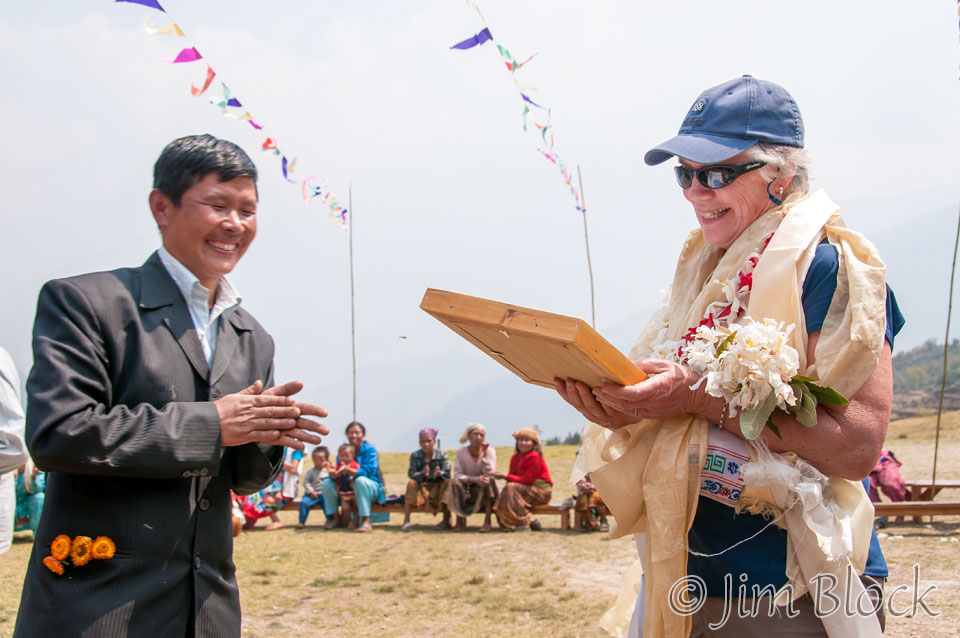
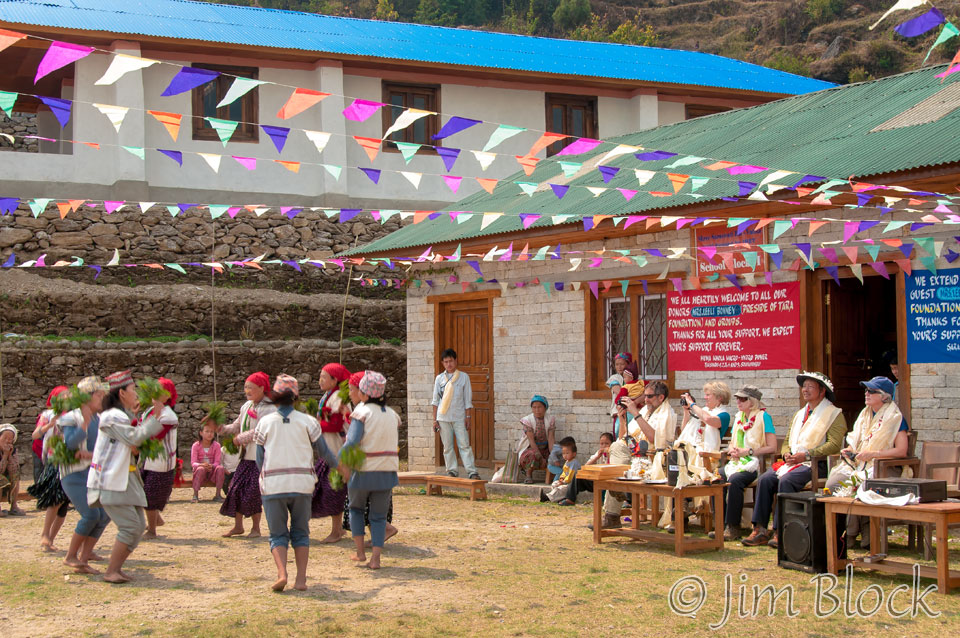
Five days later we visited Khari Gompa again.
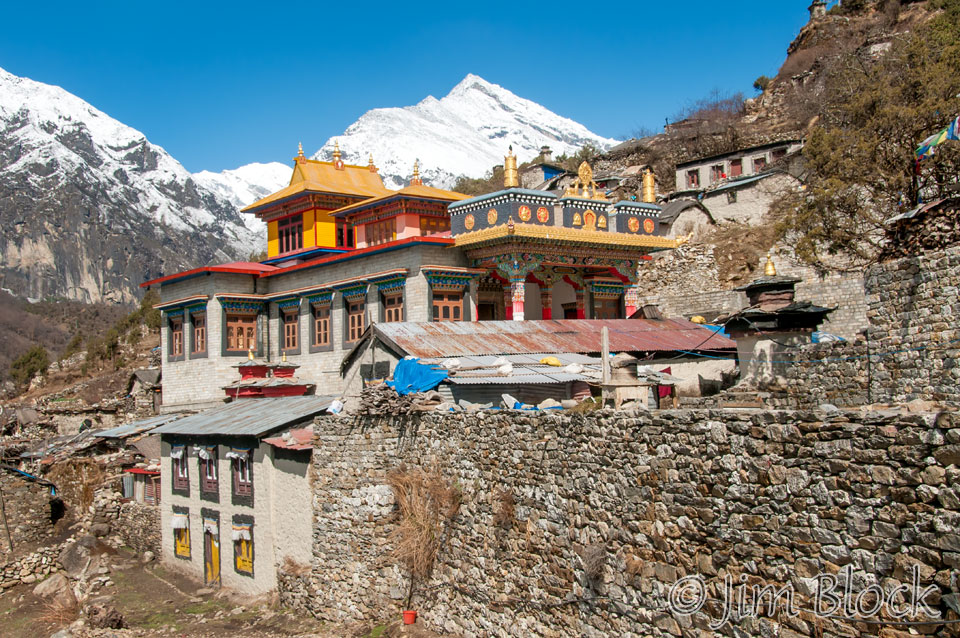
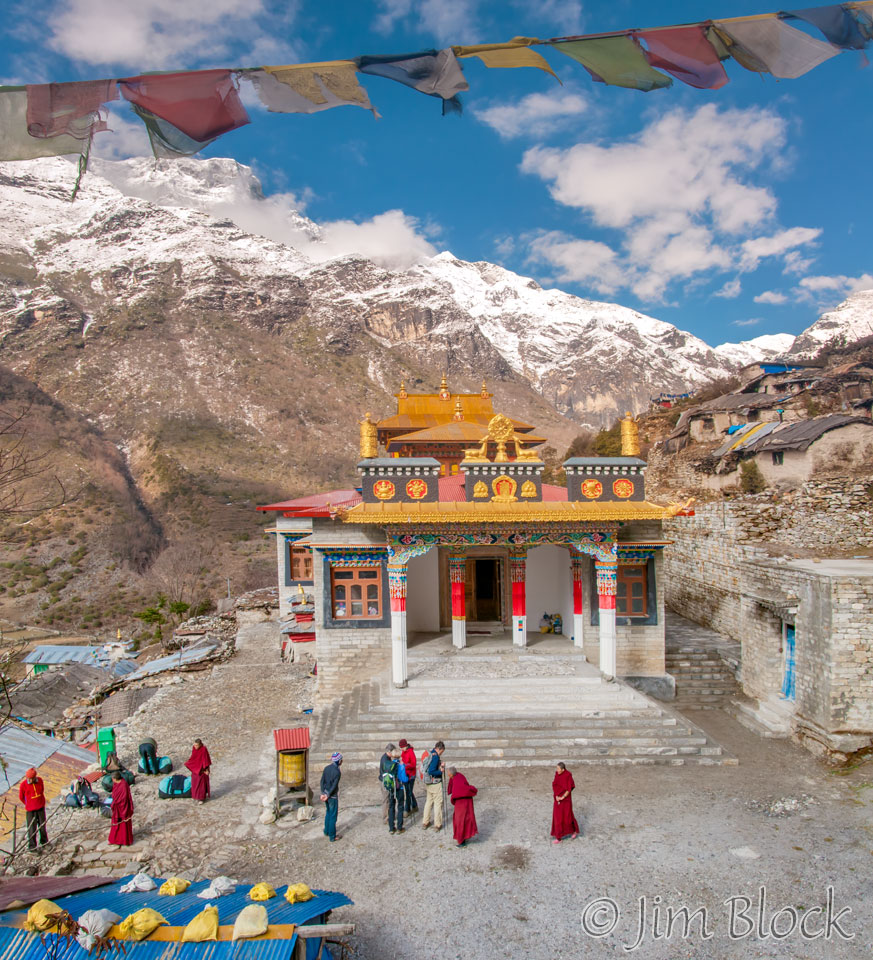
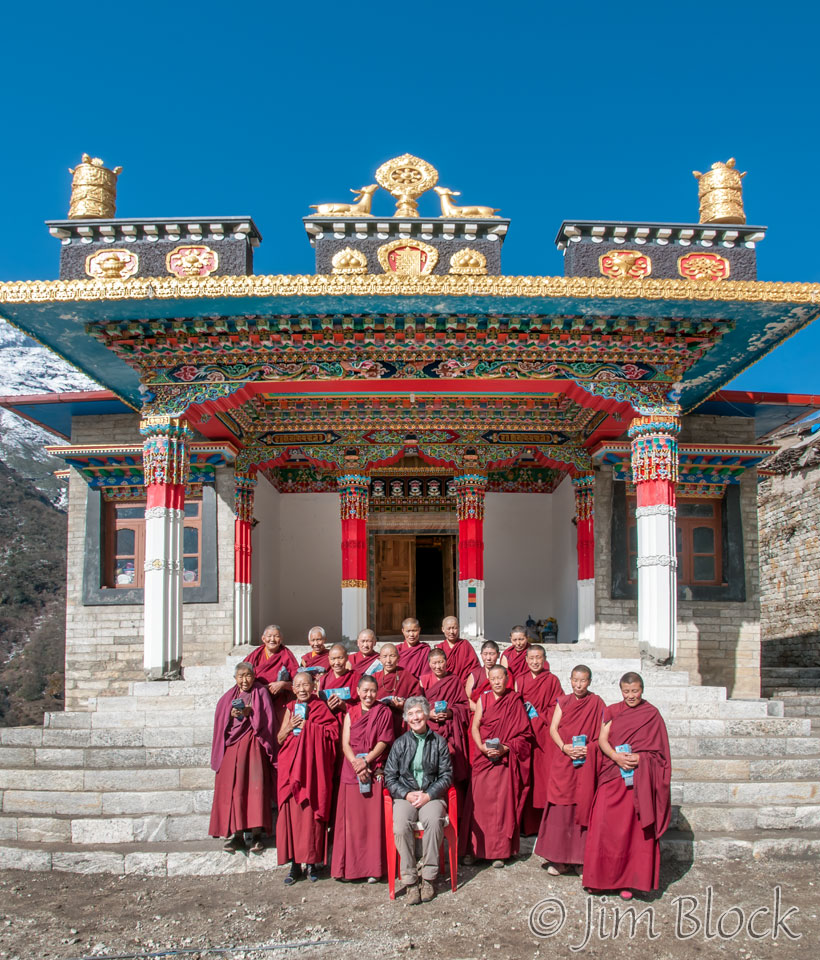
Leeli’s mother had passed away and the visit with the nuns was emotional.
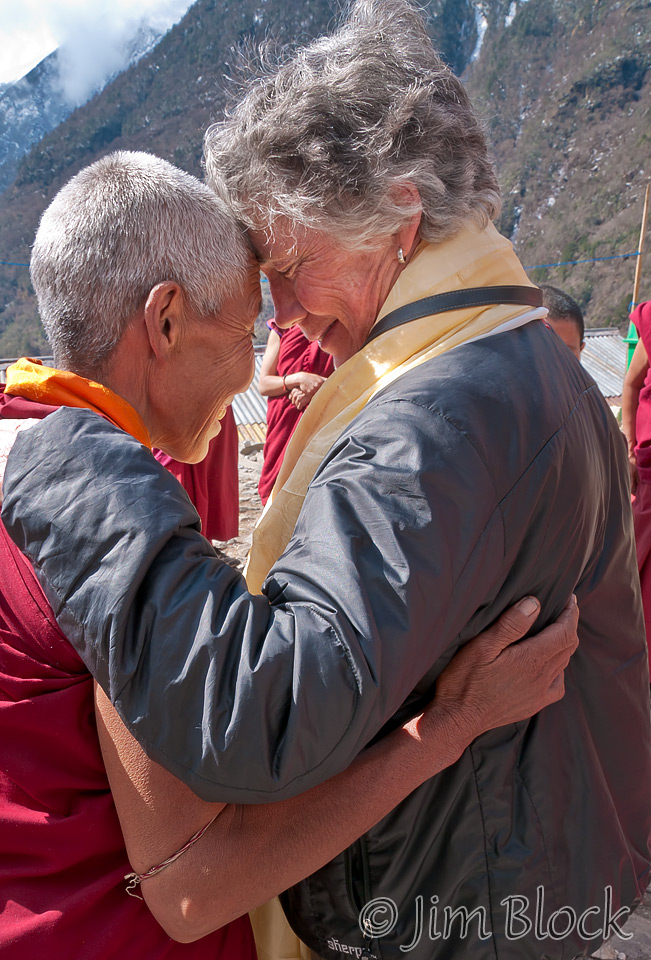
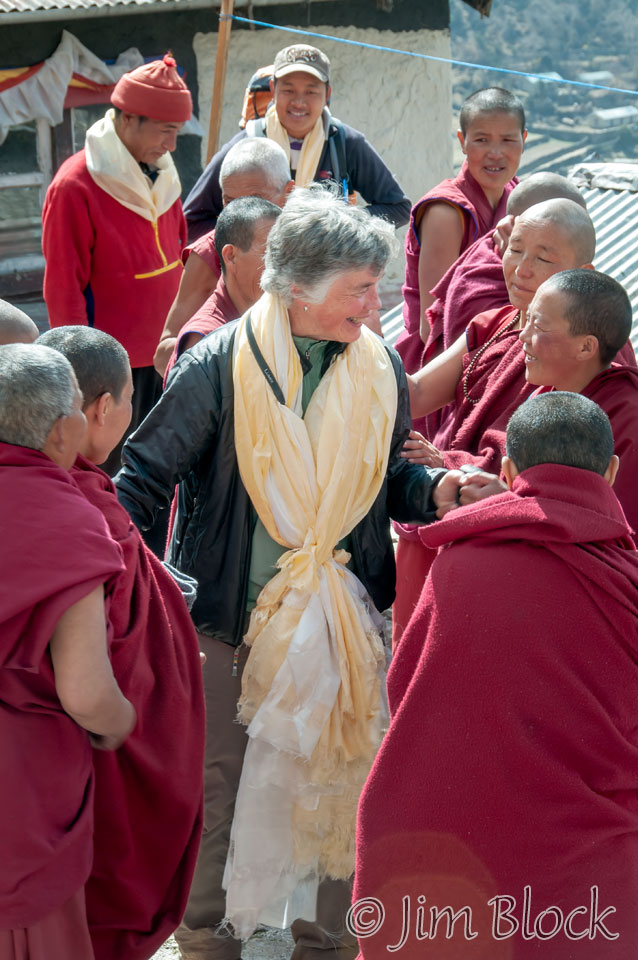
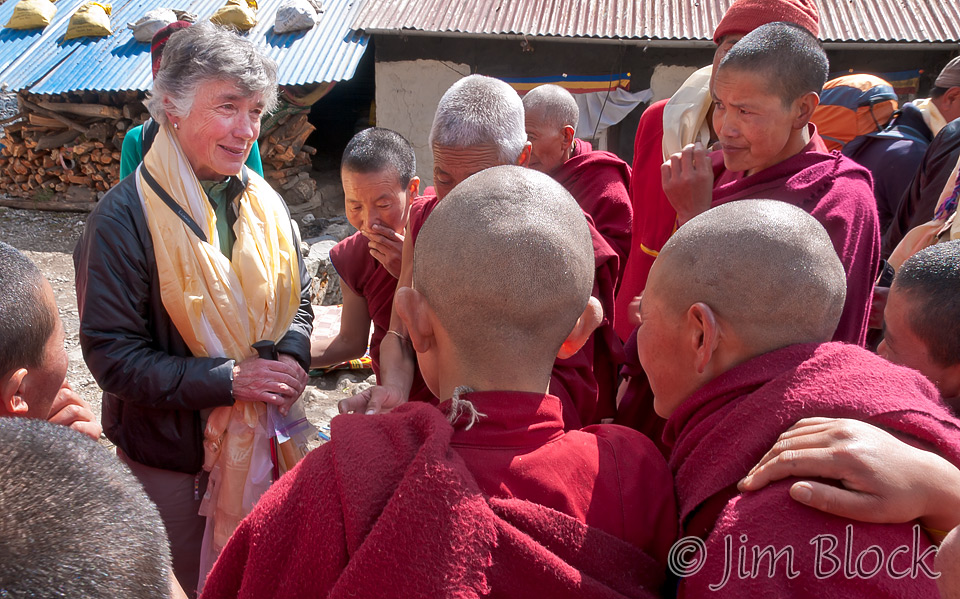
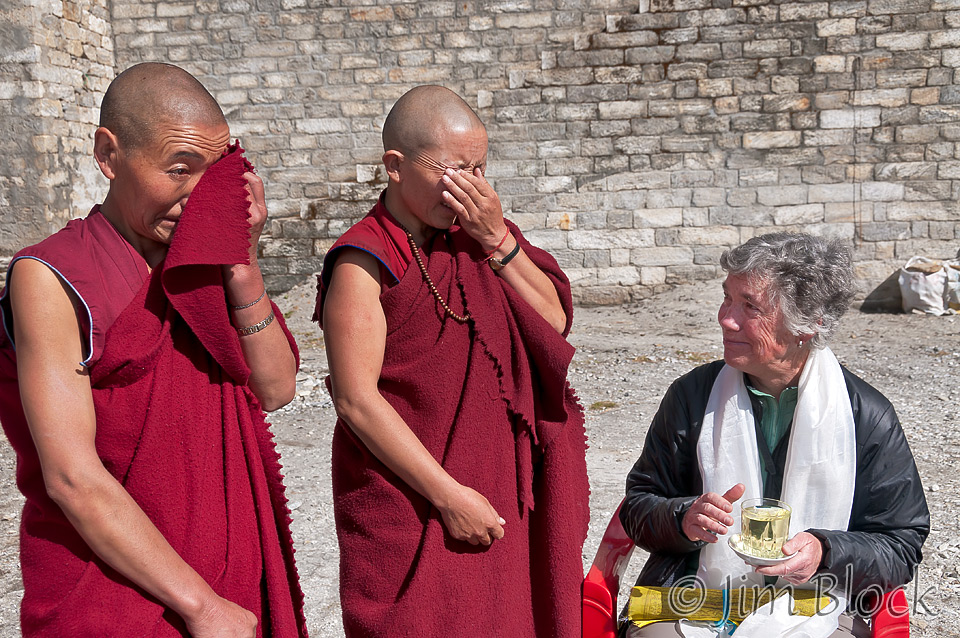
The nuns clearly did not want Leeli to leave. When we left, some were in tears.
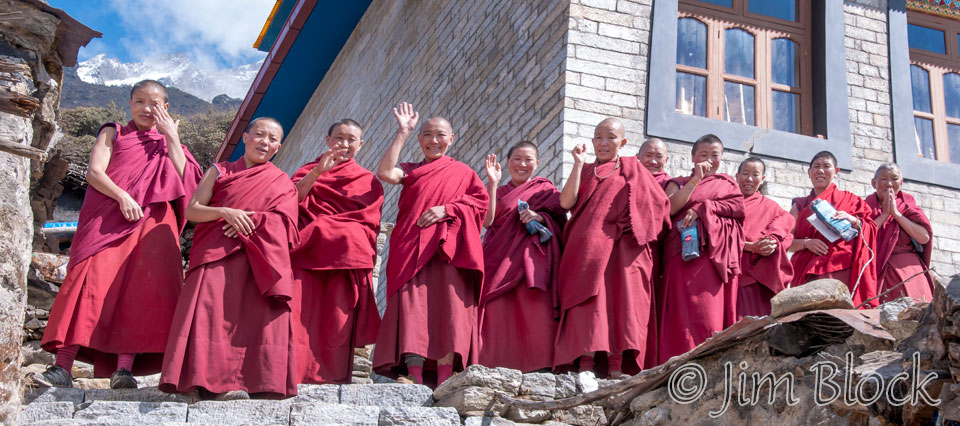
Two mornings later when we started up the first high pass, Renjo La, Denise got a touch of altitude sickness and Chhongba decided we should turn back. At that point Leeli was happy to also turn back and take an easier route because she had developed a bad cold. Milt, Carolyn, and I convinced Chhongba to let us continue our planned route over the two 18,000 ft passes with some of the porters and sherpas. We would meet again in four days in Luboche.
So Leeli, Denise, Chhongba, and a porter headed back to Khari Gompa for the night. Of course the nuns were overjoyed with their return. The next morning when they departed, the message was “come back again tomorrow”.
Here are more photos of Leeli in Nepal.


